|
|

|
Porsche, and the Porsche crest are registered trademarks of Dr. Ing. h.c. F. Porsche AG.
This site is not affiliated with Porsche in any way. Its only purpose is to provide an online forum for car enthusiasts. All other trademarks are property of their respective owners. |
|
|
  |
| andys |
 Mar 7 2013, 12:49 PM Mar 7 2013, 12:49 PM
Post
#41
|
|
Advanced Member     Group: Members Posts: 2,165 Joined: 21-May 03 From: Valencia, CA Member No.: 721 Region Association: None 
|
Let's install the Engman chassis stiffening kit. In preparation, I pre-fitted the plates and maked through the holes in order to grind away the paint to expose fresh metal for welding. While trial fitting, I discovered a few problem areas that required some attention.
I first noticed that the plates are not in intimate contact with the longs due to the longs not being flat; some areas are slightly bowed out (convex), while other areas are slightly bowed in (concave). So, the areas that were bowed out, I took a rubber hammer and gently hammered these areas flat. This helped reduce the gap at the bowed in areas to a somewhat reasonable amount. As any welder knows, a gap between plates like this will result in excessive shrinkage, and of course reduces the structural advantage. I noticed too, that the seat belt anchors did not line up with the pre-cut holes, so some work was needed there. Also, the plate that goes across the rear required clearance notches be added for the ribs in the floor pan. Other areas requiring detailing were additional clearance around the cross brace where it meets the long, re-positioned holes so as to line up with the lower backpad screw holes, and the speaker grill screw holes needed the same attention. Once prepped, the work could start. The chassis was placed on jackstands (at the donuts) and shimmed level. I first measured the door gaps in three places on each side. Then before welding, I placed a jack under the chassis centered in the middle of the long to where it just started to remove the weight from the the donuts. This was done to as an alternative to removing the doors and installing door braces. I don't own a MIG welder, so TIG was my only best option, but I did quickly learn that TIG is not the right tool for this operation. Torch in one hand, rod in the other, operate pedal with knee, and contort body in ways never before experienced is just not the way to go. I was careful with my weld sequence to best manage heat build-up. Since I had no door braces, I worked slowly, and stopping often to check the door gaps. I would switch back and forth from the drivers side long to the passenger side long to again, manage the heat. I did this over a span of three days to insure that the door gap shrinkage was minimized. I did tack the rear cross re-enforcement in a couple of spots to hold it in place until the longs were done, then I finished welding that in place. When done with all the welding, I of course ground the welds flush. Attached image(s) 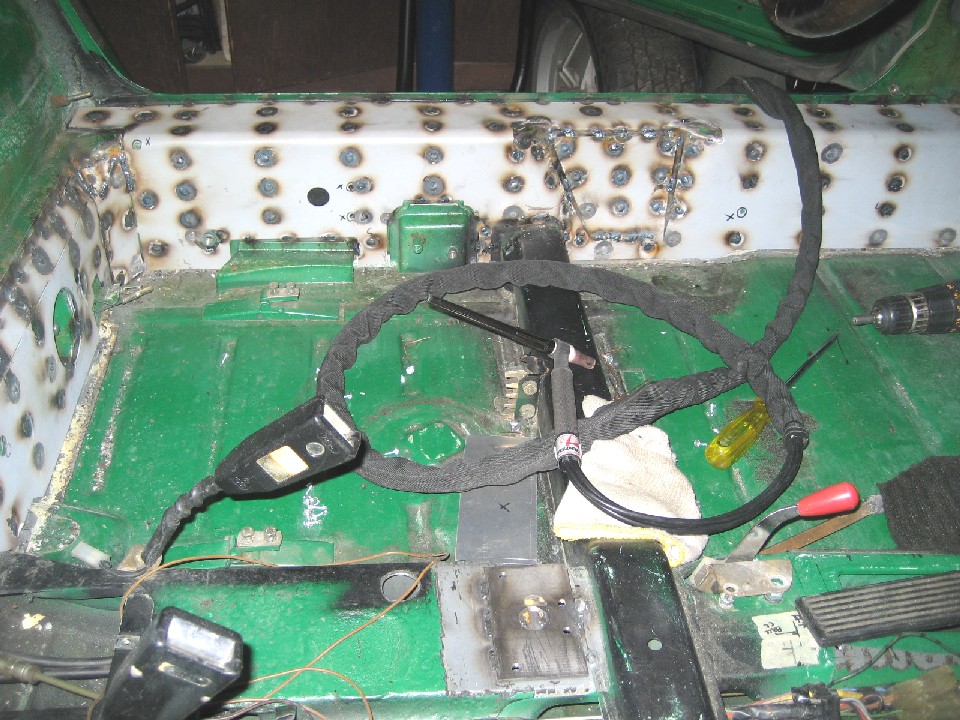 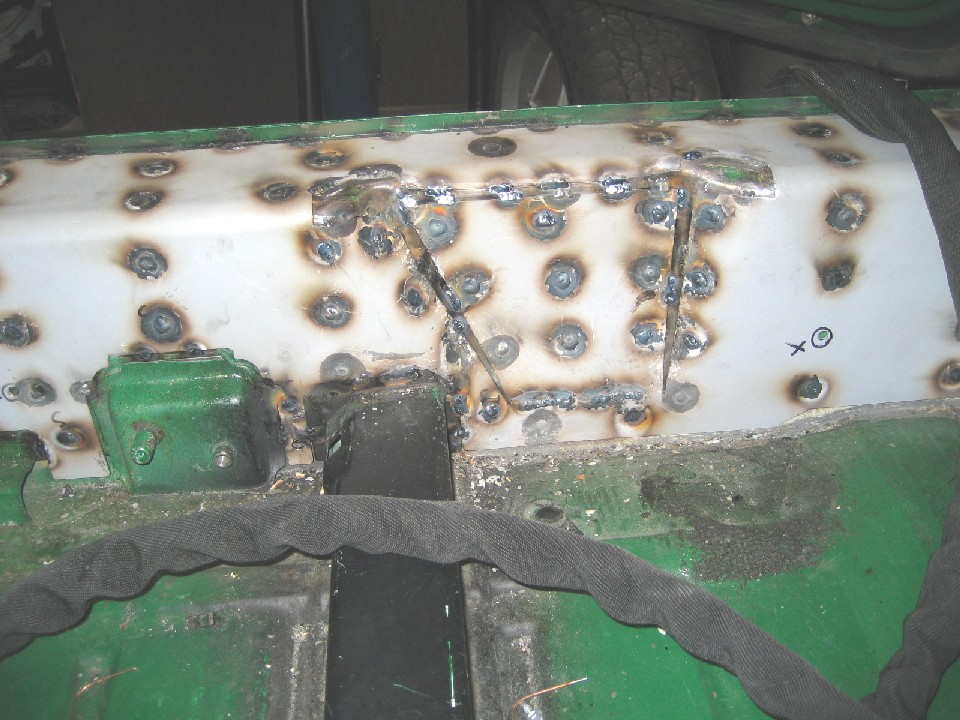 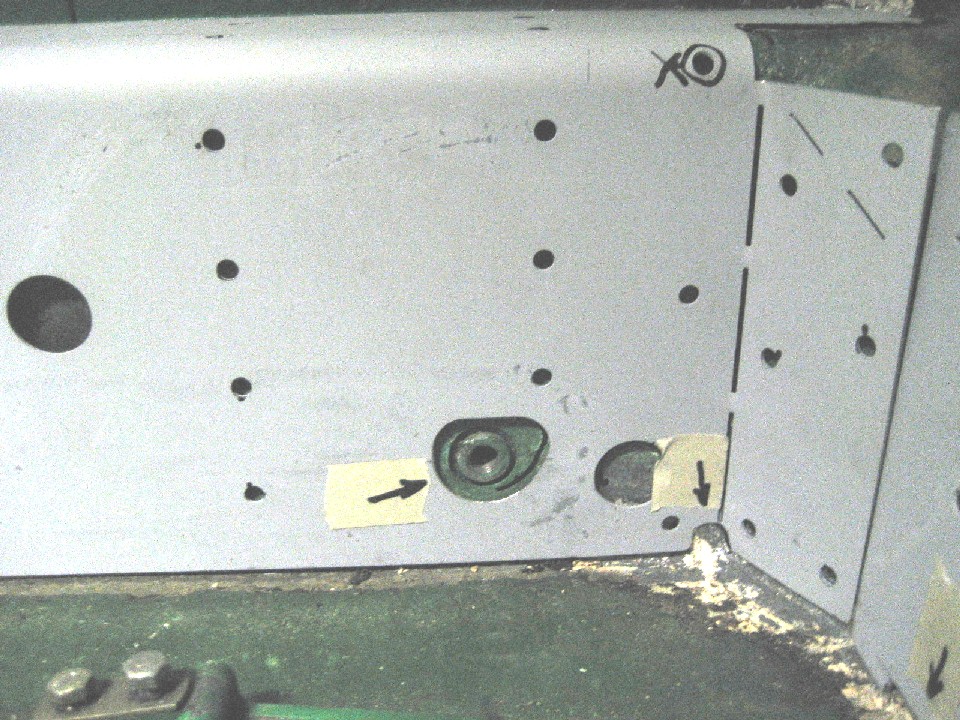 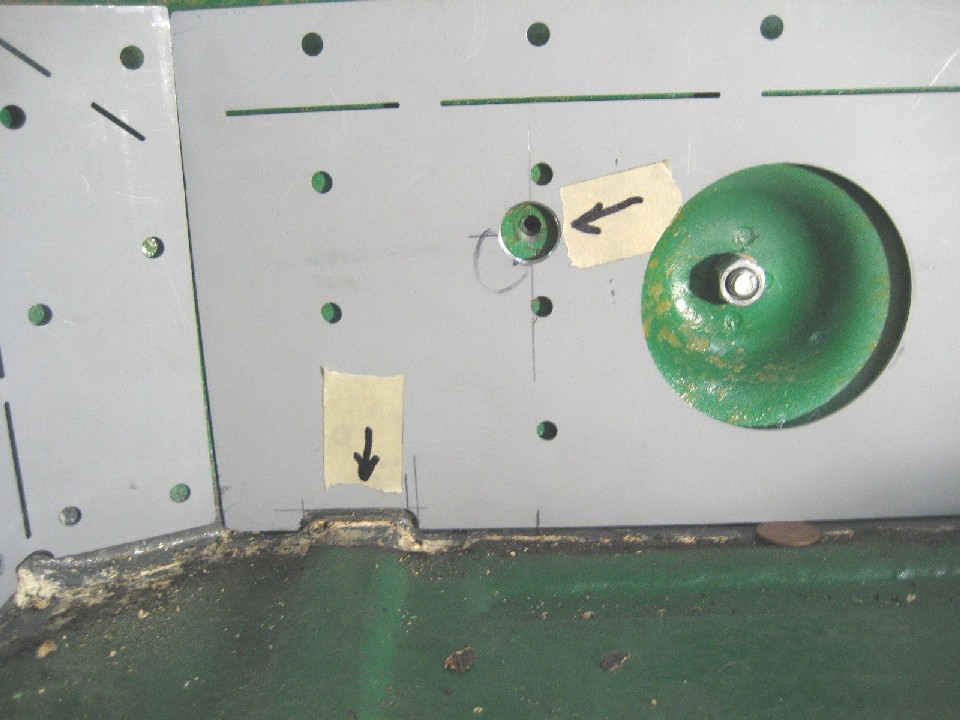 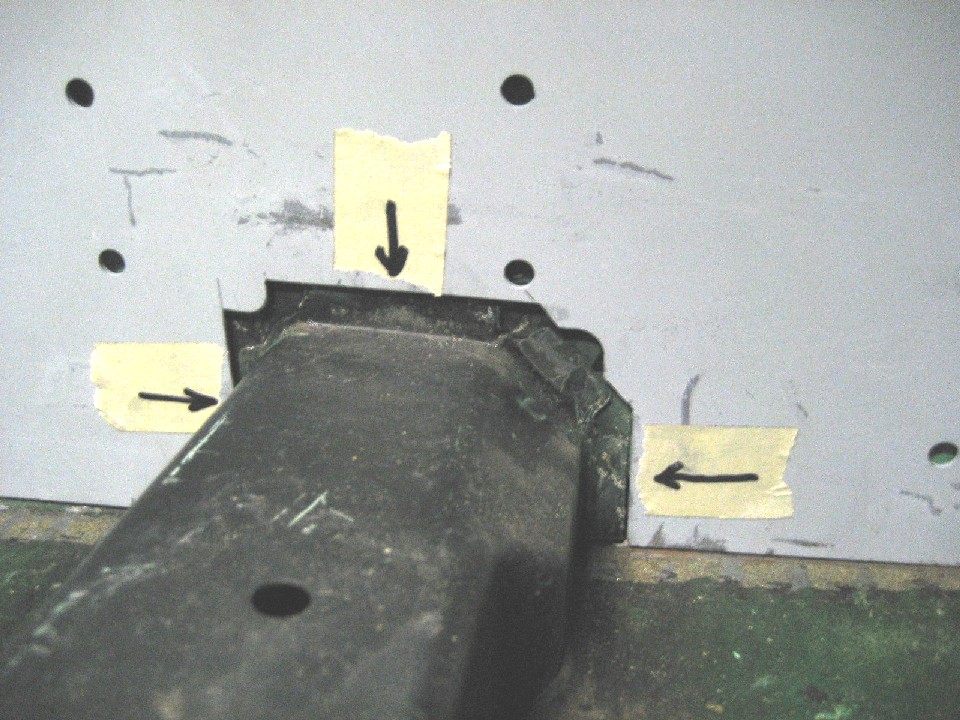 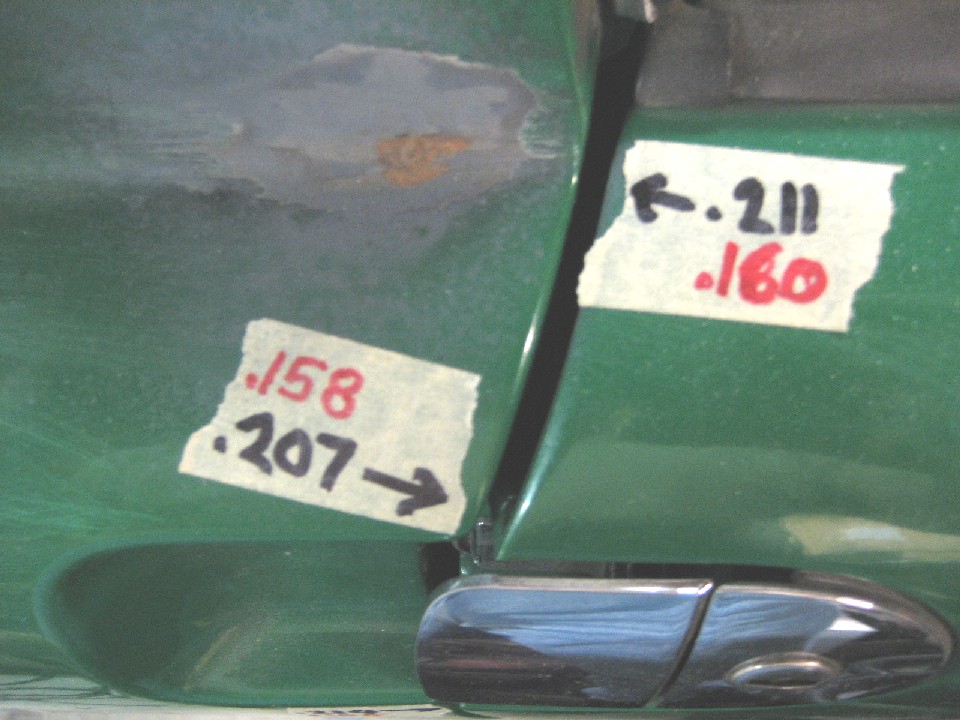 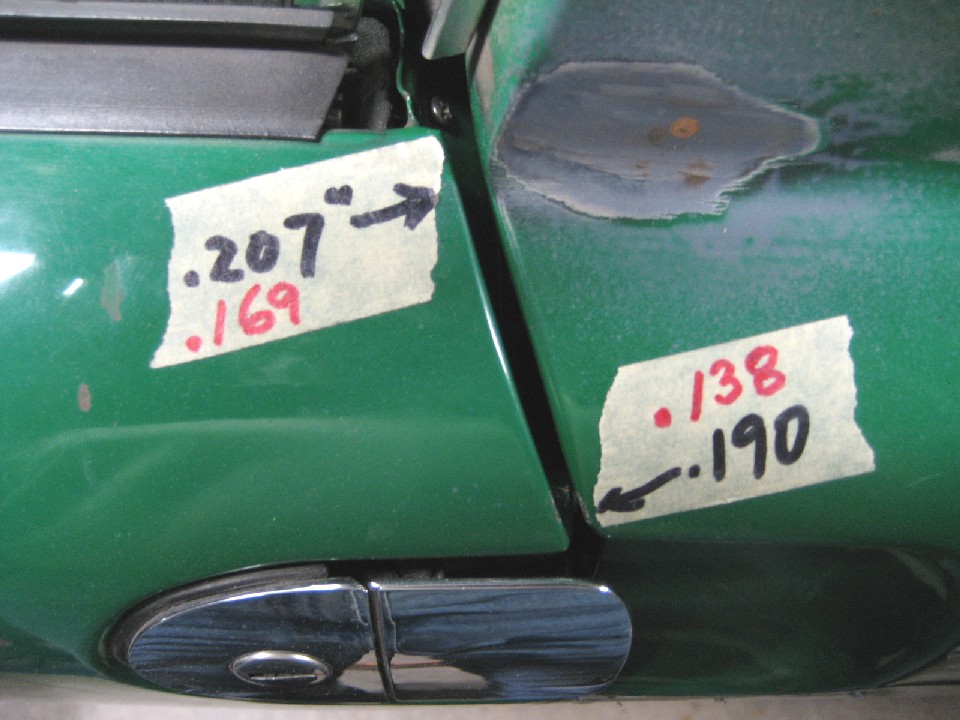 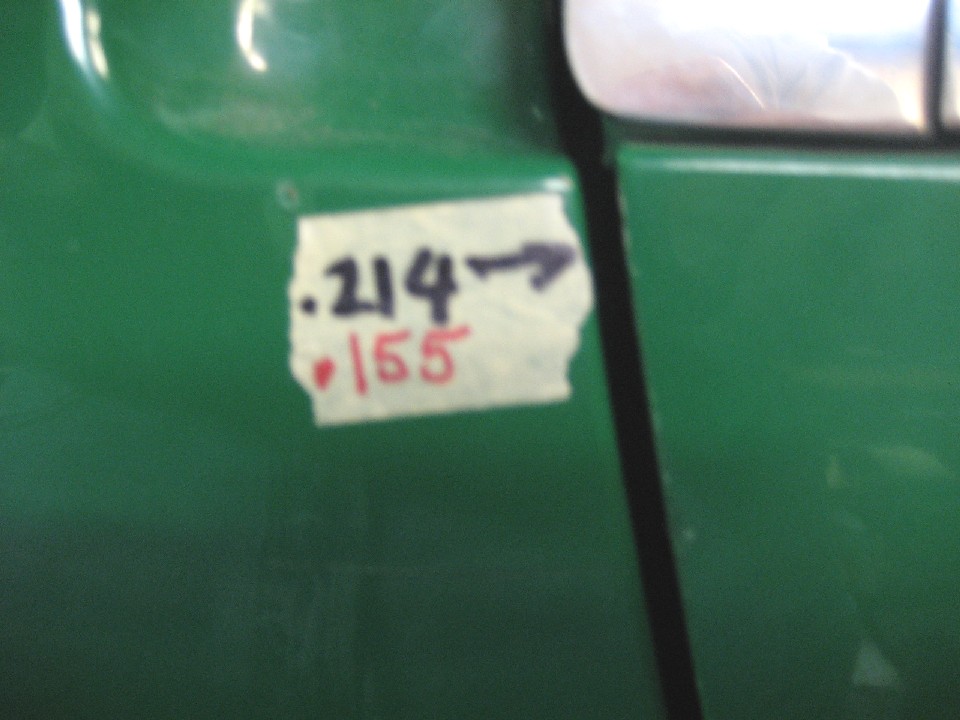 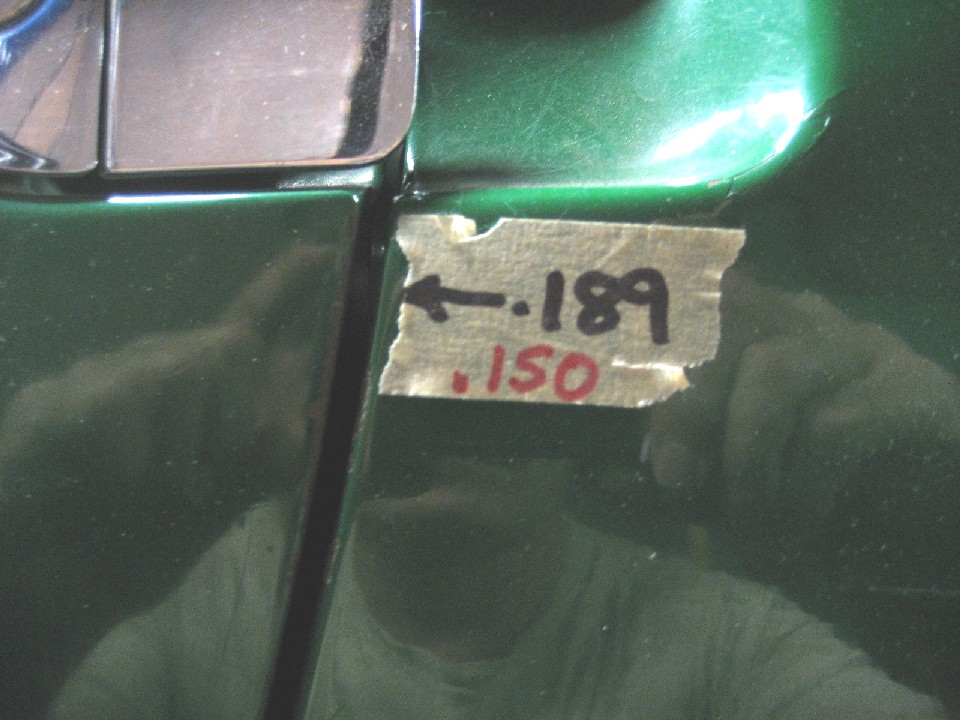 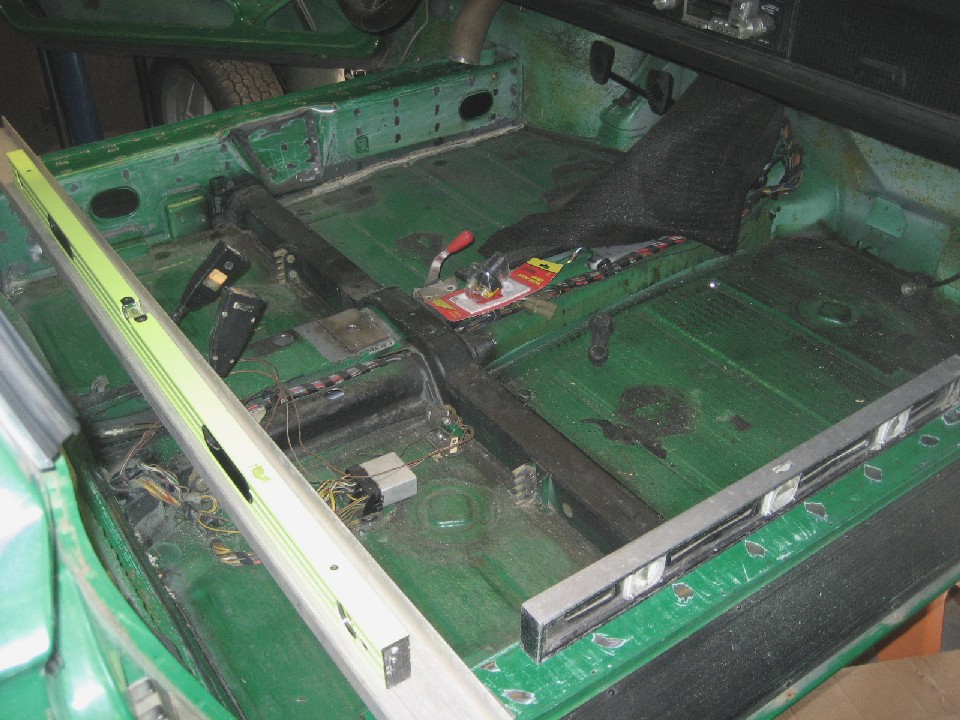
|
| andys |
 Mar 7 2013, 01:03 PM Mar 7 2013, 01:03 PM
Post
#42
|
|
Advanced Member     Group: Members Posts: 2,165 Joined: 21-May 03 From: Valencia, CA Member No.: 721 Region Association: None 
|
I forgot to mention, that I put a few Tek screws on the long and rear re-enforcement plates to better hold them flush against the chassis prior to welding. They were of course removed, and those holes welded as well.
Andys |
| jd74914 |
 Mar 7 2013, 06:40 PM Mar 7 2013, 06:40 PM
Post
#43
|
|
Its alive     Group: Members Posts: 4,864 Joined: 16-February 04 From: CT Member No.: 1,659 Region Association: North East States |
I don't own a MIG welder, so TIG was my only best option, but I did quickly learn that TIG is not the right tool for this operation. Torch in one hand, rod in the other, operate pedal with knee, and contort body in ways never before experienced is just not the way to go. You need a thumb control Andy. They are perfect for stuff that doesn't require real precision when you don't want to use a knee or elbow on the pedal. (IMG:style_emoticons/default/blink.gif) Nice job, the car looks great! |
| andys |
 Mar 8 2013, 10:25 AM Mar 8 2013, 10:25 AM
Post
#44
|
|
Advanced Member     Group: Members Posts: 2,165 Joined: 21-May 03 From: Valencia, CA Member No.: 721 Region Association: None 
|
You need a thumb control Andy. They are perfect for stuff that doesn't require real precision when you don't want to use a knee or elbow on the pedal. (IMG:style_emoticons/default/blink.gif) Nice job, the car looks great! You know Jim, I got pretty good at the knee/back of knee/leg/etc pedal actuation so that was never the biggest problem. It's the need to get both hands into a confined area (filler rod in one hand, torch in the other) that is the killer. For example, welding the long re-enforcement in the footwell area....My body hurts just thinking about it! A MIG is so much easier for that kind of stuff. Andy |
| andys |
 Mar 12 2013, 02:07 PM Mar 12 2013, 02:07 PM
Post
#45
|
|
Advanced Member     Group: Members Posts: 2,165 Joined: 21-May 03 From: Valencia, CA Member No.: 721 Region Association: None 
|
I installed fiberglass flares, and here's why. At the time, the AA steel repro flares were not available, and the only one's that were, were $$$ and not easy to find. Additionally, the fiberglass flares were just a tick wider than the steel, and would accomodate my rear 993 wheels and 255-40-17 tires. As for the wheels, I found a local Ebay seller, so that worked out well. The flares I got from a shop that purchased all the old Mitcom molds, so I bought the flares, rockers, and 916 rear bumper (which I didn't use).
The first thing I did, was to prep the flares by making sure the right to left side periferies were the same. After some minor trimming, they were good. The next bit of prepping, was to grind the high spots on the inside where the flare would be in contact with the body of the car. The result was that the flares were much more flush than before, so it was a worthwhile step. Since I knew the rear tire was a tight fit, I trimmed the inside lip of the rear flares to about 5/8". I then marked the axle centers (used an aluminum bar across the car with plumb bob's), and taped the flares (centered) into position and marked the body with a Sharpie. I did make sure the flare fit the rockets as well. Removing the flares, I next marked a scribe line 1" to the inside of the first line for some overlap. I then took my sabre saw and cut to the inside line. I taped the flare back into position, then drilled and installed Tek screws every 3" or so. Removed again the flares, and ground away the painted area between the cut and the 1" scribe line. After some research, I decided on a two-part epoxy product called PC-7. It's mixed viscosity is about that of Bondo, but has a lower shrinkage rate and it's a structural adhesive. Oh, it also has a favorable pot life of 1 hour, and a service cure of 24 hours (7 day full cure). I got mine from The Do-It Center, but it's available at a number of retailers. So, I'd trowel on a bead adhesive onto the 1" paint free area of the body (sorry, only photo of this is with wife clowning around), and also "butter" the inside of the flare, then position the flare and drive the Tek screws into place. This operation went really fast. The adhesive that oozed out was simply wiped off, both outside, and underside. Bam! A flared car! Ok, well not quite, as there is a whole lot of filling and sanding necessary to finish the job. If I were to do it again, I'd go with the steel flares just because the fiberglass one's take so much effort to get right. I spent countless hours on the shaping, then spray on some primer in order to spot any imperfections, then do it over and over till it was right. I discovered a big problem further along in the build when I got the car on the ground for the first go kart test drive (no doors, no glass, etc). The tire would rub against thefront edges of the front flares when turning the wheels even a little bit. A shout out to 914World got me some measurements of the wheel openings of the steel flares......and sure enough, the fiberglass flares were less by about 1 1/2". What I figured was the fiberglass shrunk and the opening closed-up. Needless to say I was PO'd, though I guess I wasn't surprised, since fiberglass parts in general don't hold their shape well when un-supported. The fix was many more hours of pie-cutting, re-glassing, and filling to get both the opening and shape right (IMG:style_emoticons/default/mad.gif) Attached image(s) 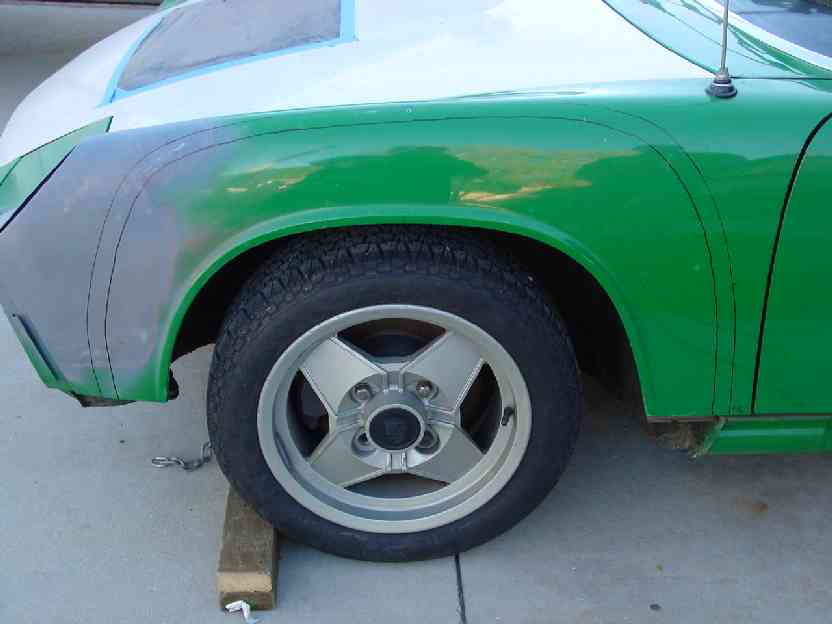 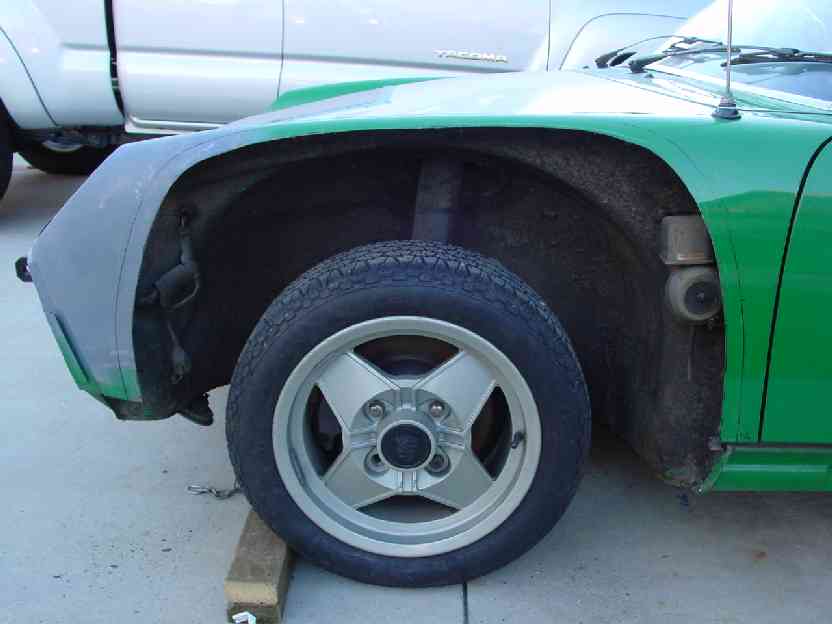 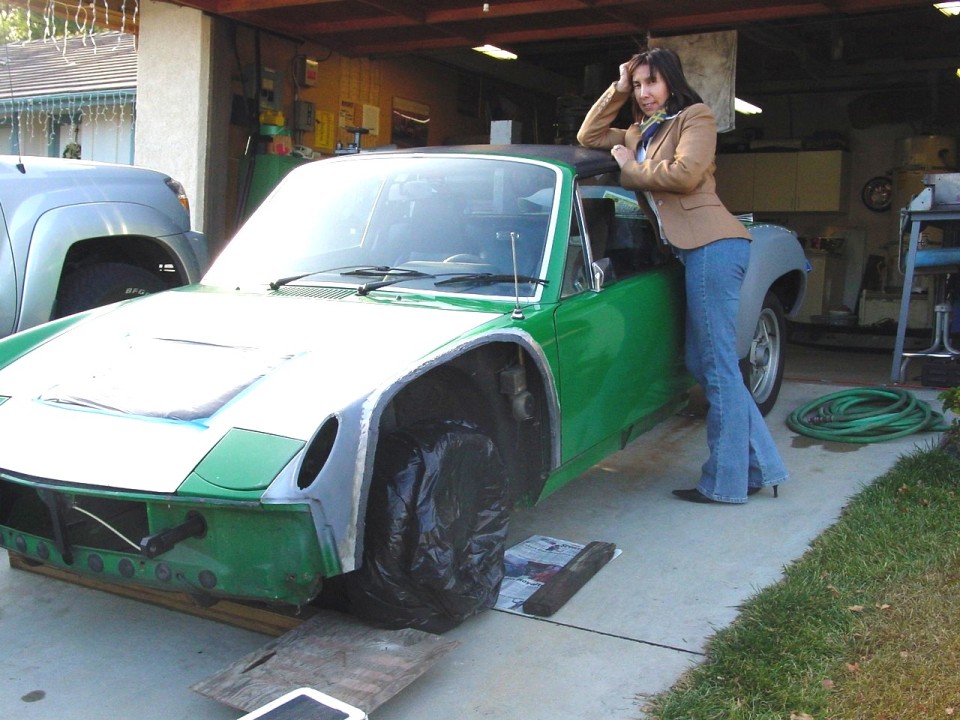 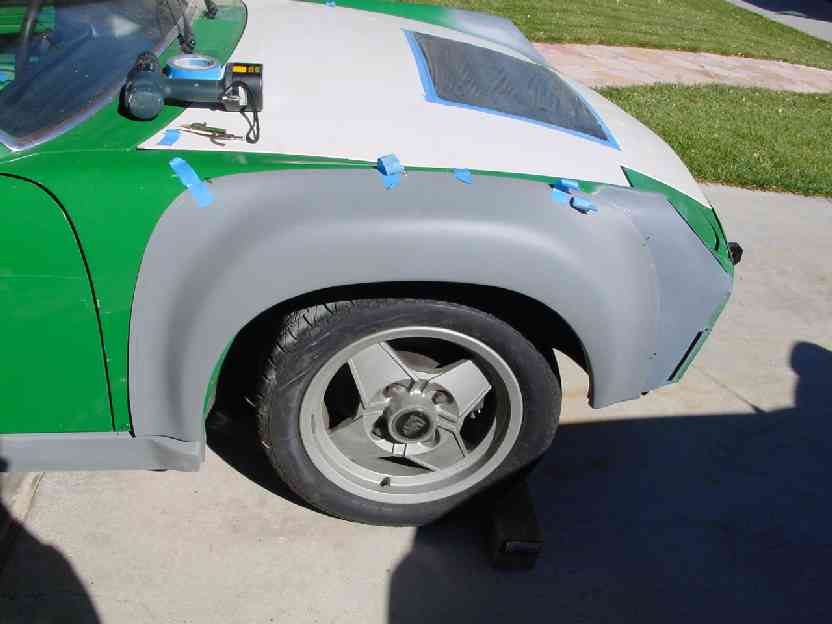 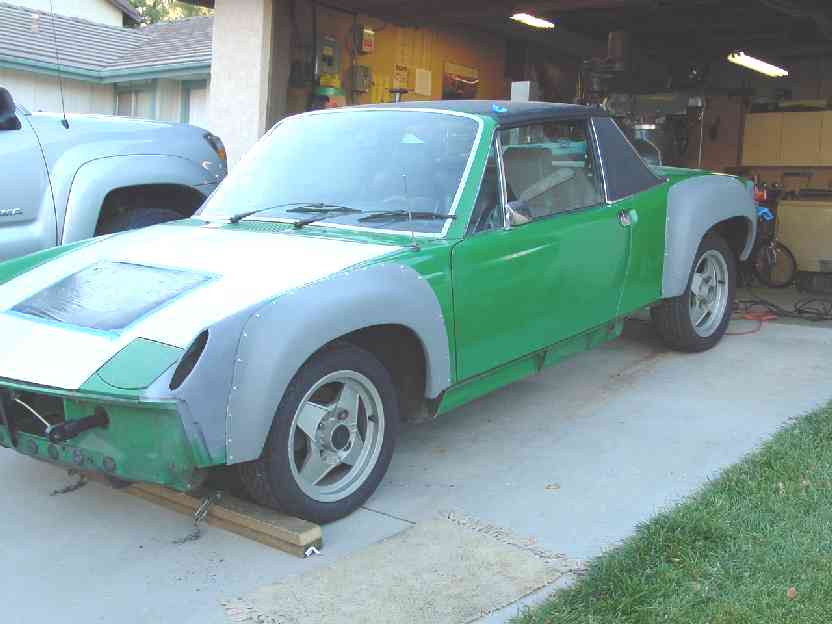 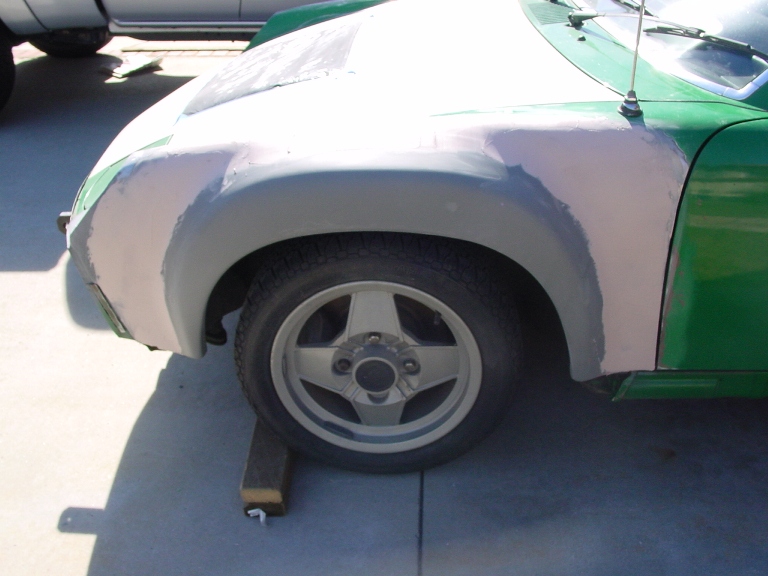
|
| andys |
 Mar 13 2013, 12:16 PM Mar 13 2013, 12:16 PM
Post
#46
|
|
Advanced Member     Group: Members Posts: 2,165 Joined: 21-May 03 From: Valencia, CA Member No.: 721 Region Association: None 
|
As the cooling system is a crucial part of a V8 conversion, I wanted to be sure to apply good practices for both performance and reliability. I first set out to configure the layout. As such, I decided on thru hood venting rather than the traditional thru fender venting. What I don't care much for with the thru fender venting, is that it creates a big under hood hot box. The thru hood venting, with appropriate ducting, allows the heat to rise naturally thru the opening which is especially important when sitting still in traffic. Down side of thru hood venting is of course it's affect on the car's styling. Enough pontification; lets build a cooling system!
I started with an aluminum radiator from AFCO; P/N 80133N which is an ASA racing radiator, dual pass, cap delete, 27 1/2 x 16 x 3. I see now that Summit sells them, though it's about $100.00 more than I paid a few years ago when I bought directly from AFCO. I'm going to gush a bit about how great these guys at AFCO are to deal with. Again, your typical Mid-Western stock car supplier/manufacturer that is a joy to work with...great attitude, etc. Anyway, the radiator size works out well in the 914; all that was needed was to tip it slightly forward, and it fit. First I cut an opening in the front bulkhead, and re-enforced the center rib with a formed piece of channel to help stiffen the structure. I then determined the most suitable position for the radiator and went about designing a mounting scheme. I did what I've done on race cars, which is to build a U shaped channel lined with foam into which the radiator gets inserted into. This avoids any hard mounting, and completely shock mounts and isolates the radiator. I always cringe when I see folks hard mount radiators. There are of course other ways to shock mount, but this is how I like to do it. I made the U shaped channel out of aluminum with tabs in strategic locations for mounting. For the mounting points, I also shock mounted this structure to the chassis with two rubber isolators on the bottom, and two rubbber grommet mounts on the top. I used two Zirgo 10" puller fans and mounted them to a shroud. I also made some silicone rubber flaps to pass additional air at higher speeds thru the shroud as well. The shroud bolts to the structure. For the ducting, I made some sheet aluminum ducts both front and back that mount to the radiator U structure, but do not fasten to the bulkhead, but stop short with foam gasketing to make the final seal. For the exit side, I made a duct that turns upwards. A foam gasket seals the gap between it and the hood. The hood vent piece (diffuser) was designed with the help of an Art Center College of Design student, as I have no styling talent what so ever. I made a foam model which I covered with fiberglass and filled and sanded smooth. The size of the opening in the hood is 1.7 times the inlet side to help create the requisite pressure differential to draw the air out (with the help of the vent/diffuser). This diffuser sandwiches a rubber gasket to protect the paint, and is fastened to the hood by stailness button head screws from the underside (I bonded threaded inserts into the diffuser). With all this however, like very much what byndbad914 did with the louvered diffuser on his track car. Looks racey and subtle; if I would have known at the time, I would have simply gone that route instead. I'll get to the piping in the next post. Attached thumbnail(s) 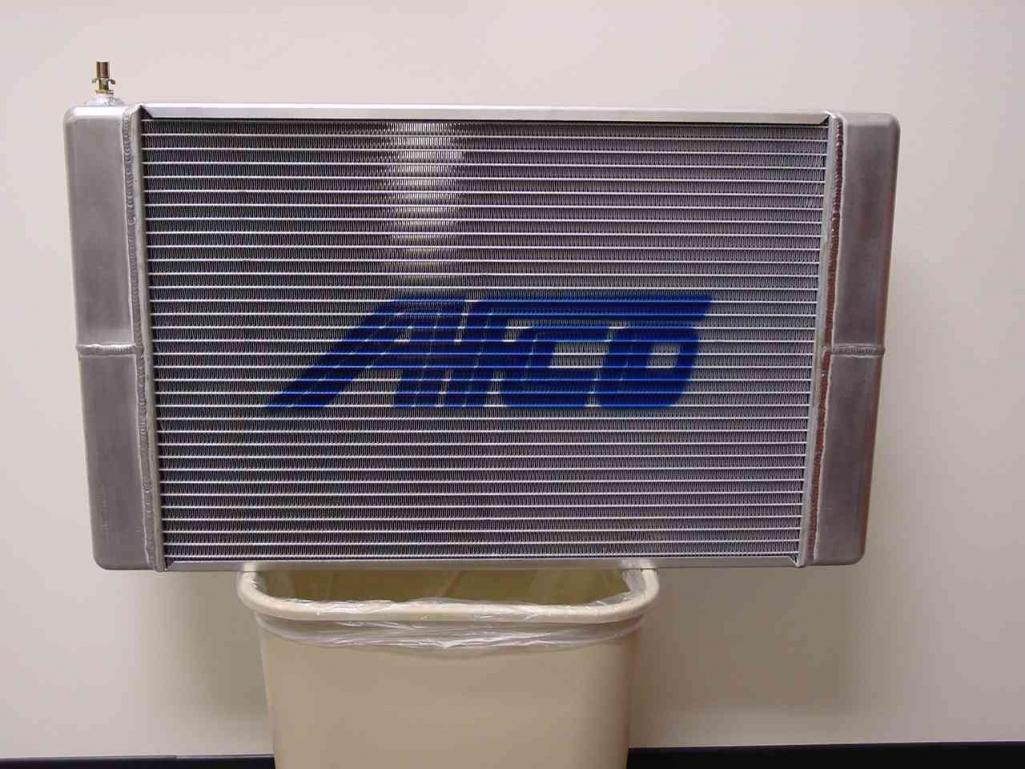 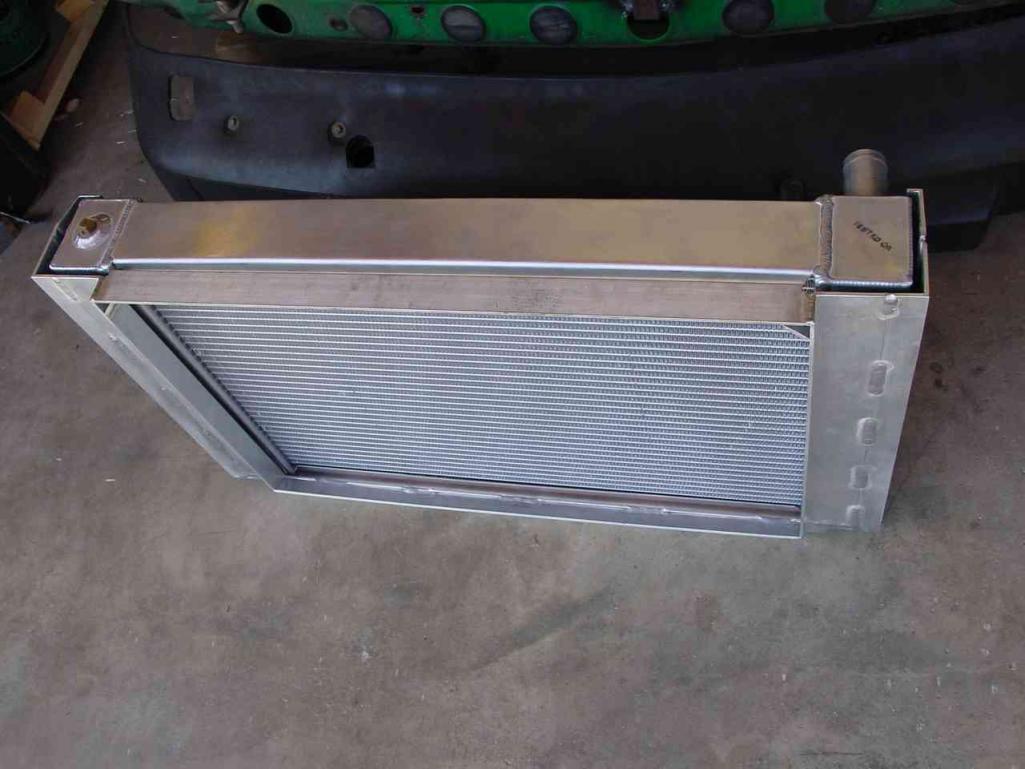 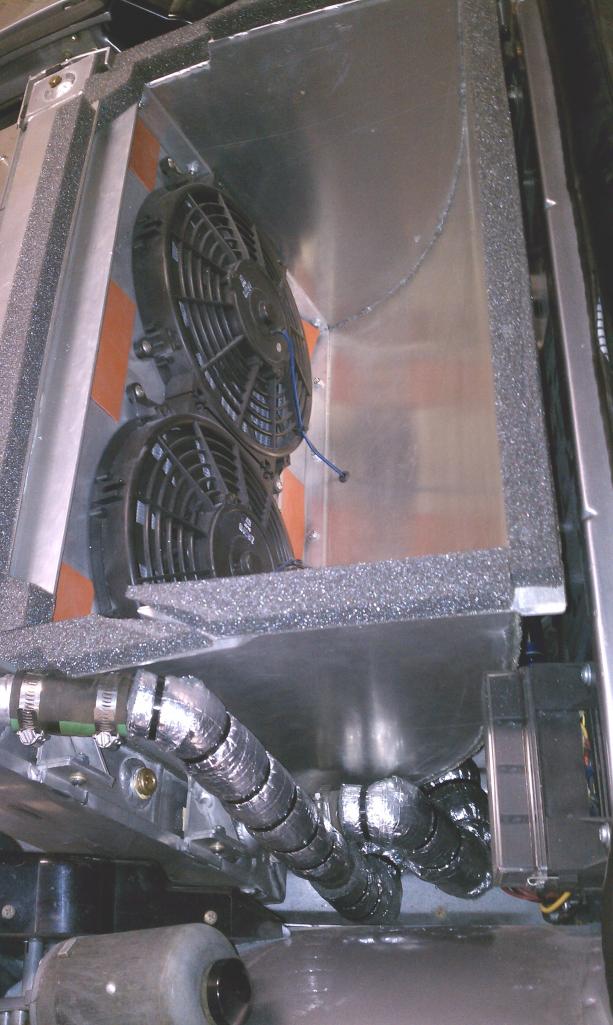 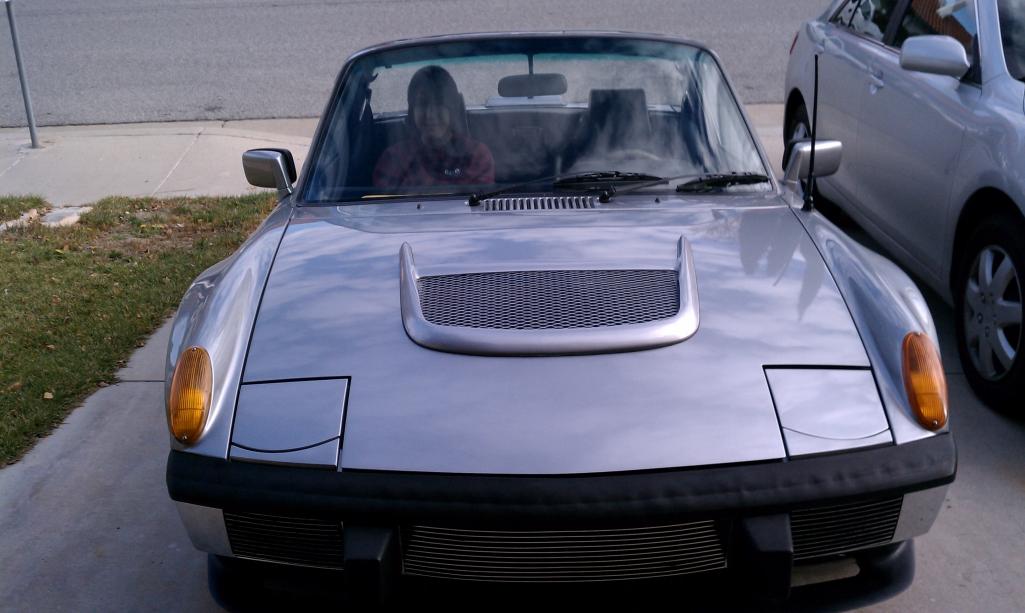 Attached image(s) 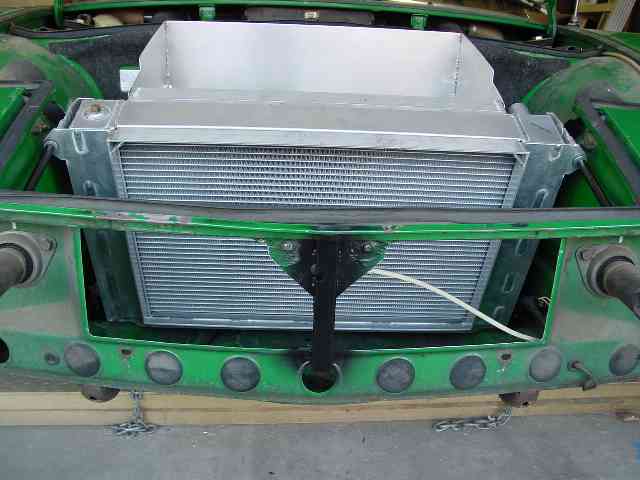 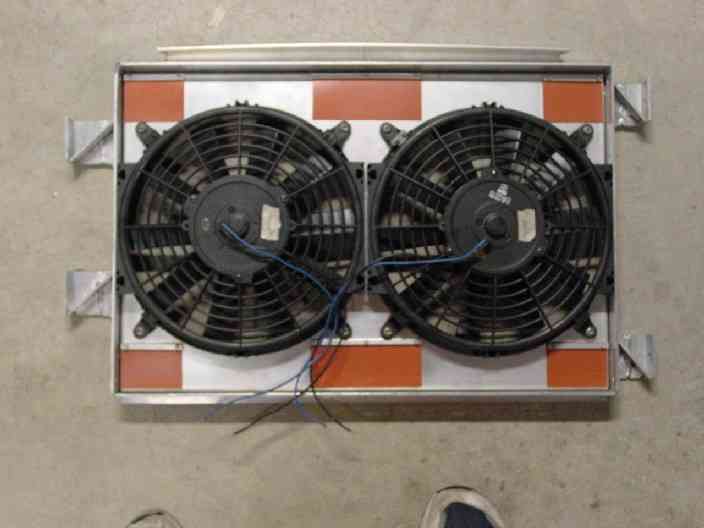 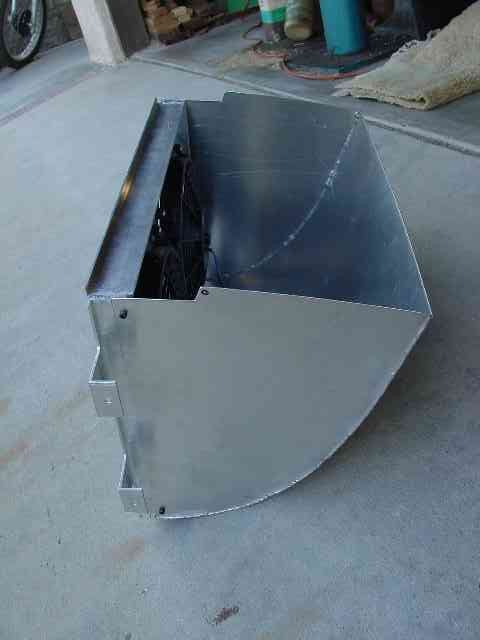
|
| quadracerx |
 Mar 13 2013, 01:45 PM Mar 13 2013, 01:45 PM
Post
#47
|
|
Member   Group: Members Posts: 428 Joined: 3-July 06 From: WA Member No.: 6,366 Region Association: Pacific Northwest |
WOW... Nice work!!
Has anyone tried a "cowl induction" style hood?" Think 69 Camaro style. That's what I think I'm going to try when I get to this point.... |
| SouthCali914 |
 Mar 14 2013, 12:43 AM Mar 14 2013, 12:43 AM
Post
#48
|
|
Newbie  Group: Members Posts: 25 Joined: 1-January 13 From: North San Diego county Member No.: 15,320 Region Association: None |
WOW... Nice work!! Has anyone tried a "cowl induction" style hood?" Think 69 Camaro style. That's what I think I'm going to try when I get to this point.... A cowl induction hood takes advantage of the high pressure zone at the base of the windshield. this would be very detrimental to potential airflow over the radiator. it's intent is to force air from this zone into the intake via ducting built under the hood. under car, through the wheel wells or ,as the op has done, through the hood are pretty much your only viable choices. |
| andys |
 Mar 14 2013, 01:47 PM Mar 14 2013, 01:47 PM
Post
#49
|
|
Advanced Member     Group: Members Posts: 2,165 Joined: 21-May 03 From: Valencia, CA Member No.: 721 Region Association: None 
|
As promised, here's what I did with the radiator water management and piping. I wanted to design a system with the correct elements necessary to ensure good performance. My main focus was on a system that would separate air from the water, and to reduce or remove the possibility of trapping air pockets. To start with, the LS1 motor has 4 steam vents in the heads; the early LS1/LS6 plumbed all four into the top of the radiator, and the later ones use only the front 2 steam vents. The traditional front engined layout tips the motor slightly back so 2 steam vents would be ok, but the 914 layout has the motor sitting level, thus I chose to use all 4 steam vents. Wegner Automotive sells a nice steam vent adapter that has a 1/8 NPT f'male thread complete with o-ring and stainless screw for cheap. I installed those, and used 90 degree compression fittings for 1/8" tubing. I decided to try some 1/8" nylon hard line as it is small and easy to route. You'll see how I ran those to my header/air separator tank.
I fabricated an aluminum flow-thru header/air separator tank, and mounted it on the drivers side of the engine compartment. I also fabricated a small purge tank. With this location, I needed to run a line from the right side water pump outlet under the motor to the left side. I made a stainless crossover pipe; I got some stainless 90 degree elbows from McMaster-Carr and welded them in, then mounted it to the motor mount bar with Adel clamps. I decided to make under car hard lines. I first made a pattern using EMT and EMT bender so that the pipes run in the two depressions in the floor pan. This helped me a lot when making bends in a heavier walled steel tube. I went with mild steel here because it's easy to bend, where stainless thin wall is nearly impossible. After bending, I coated the inside of the steel tubes with POR-15. I did weld thin wall stainless tube ends with hose beads on each end. I attached photos of a beading tool I made and the resultant bead. I cut a hole in the lower trunk area for the piping to pass through. What I did find was that the 911 aluminum suspension cross member was too bulky, so I used the tubular stock 914 cross member instead.....it was a tight fit. I've got some photos of the under car piping, but can't seem to find them at the moment; maybe later? Anyway, I hope the photos show enough to make sense of it all. Attached thumbnail(s) 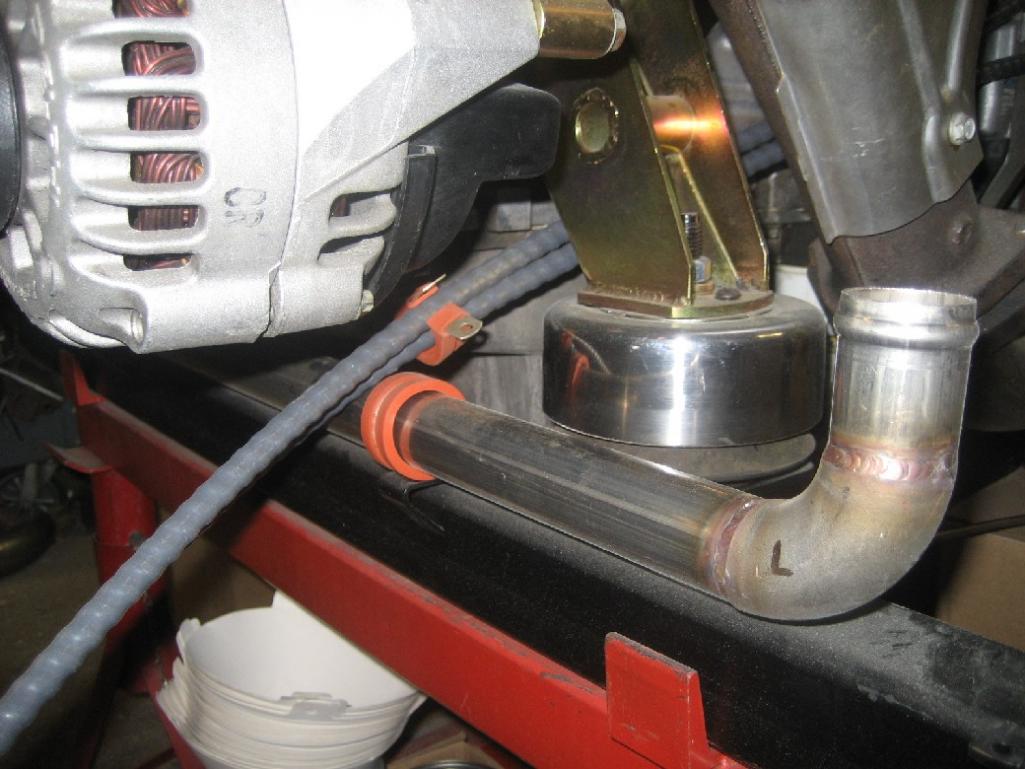 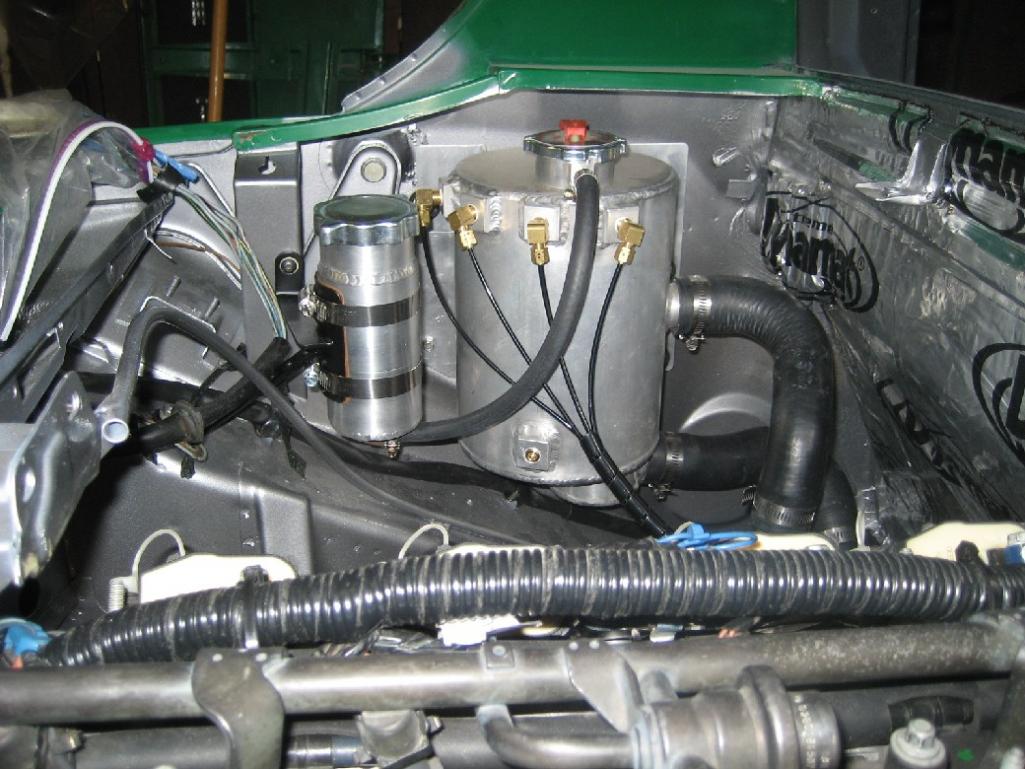 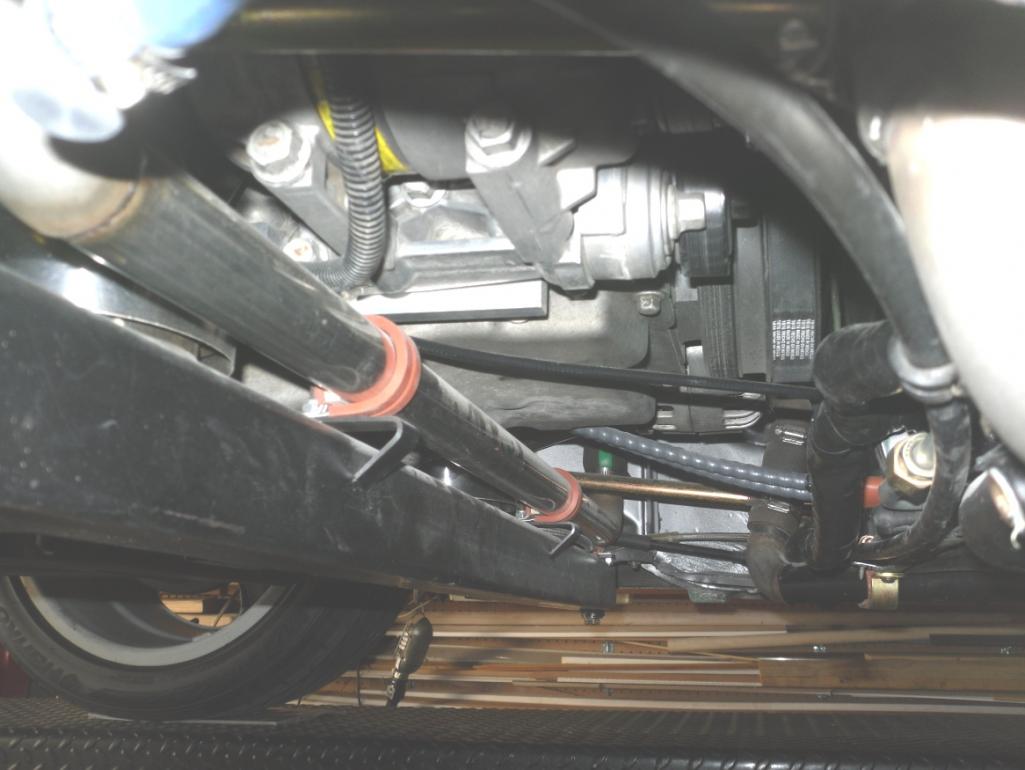 Attached image(s) 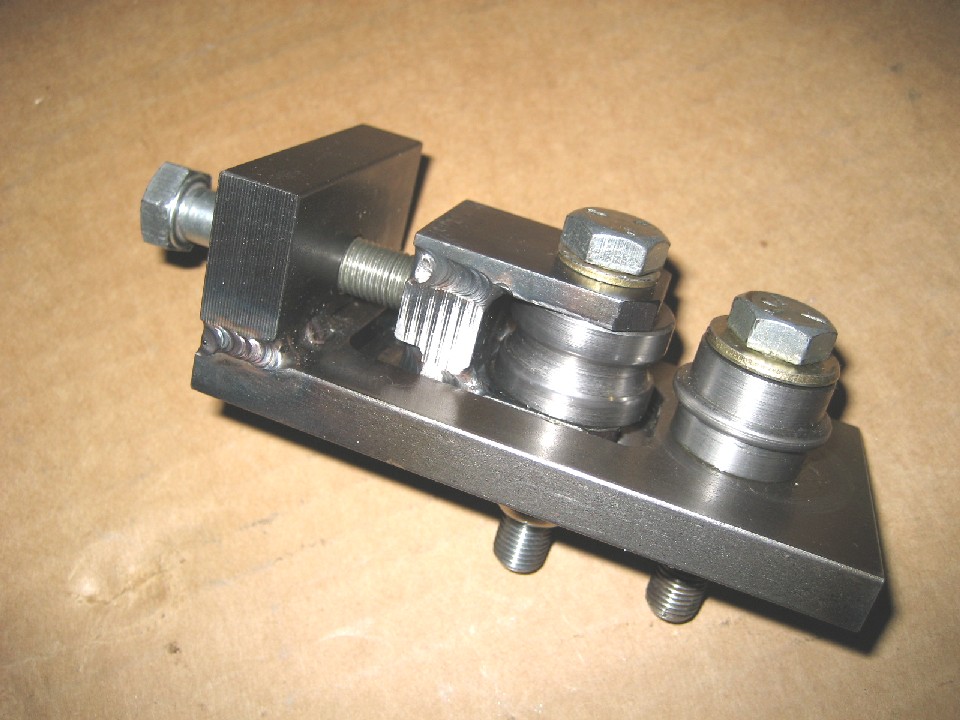 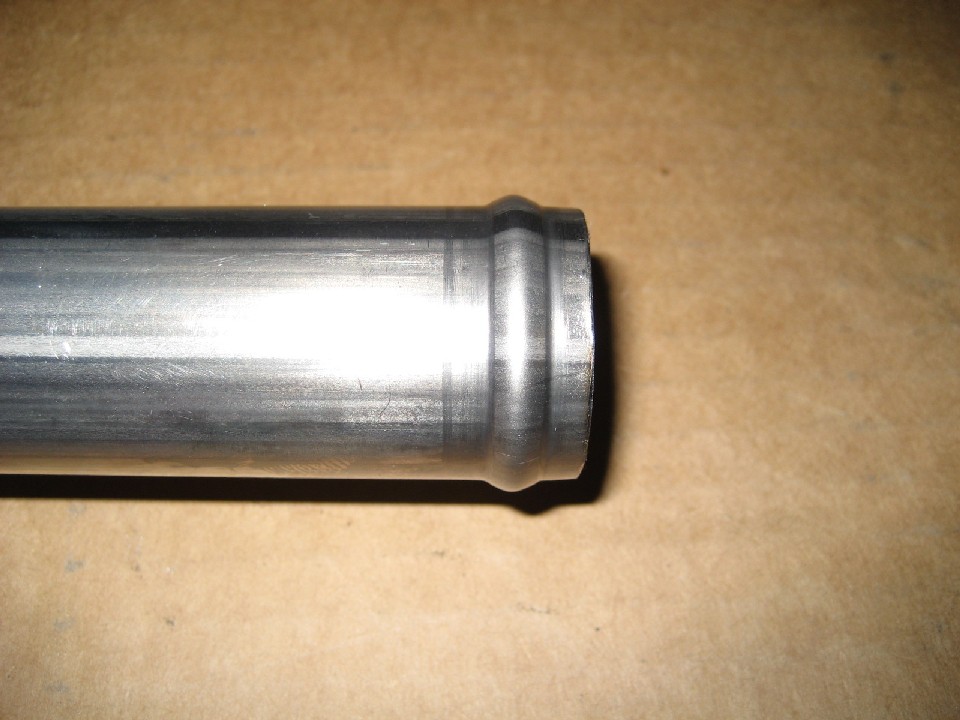 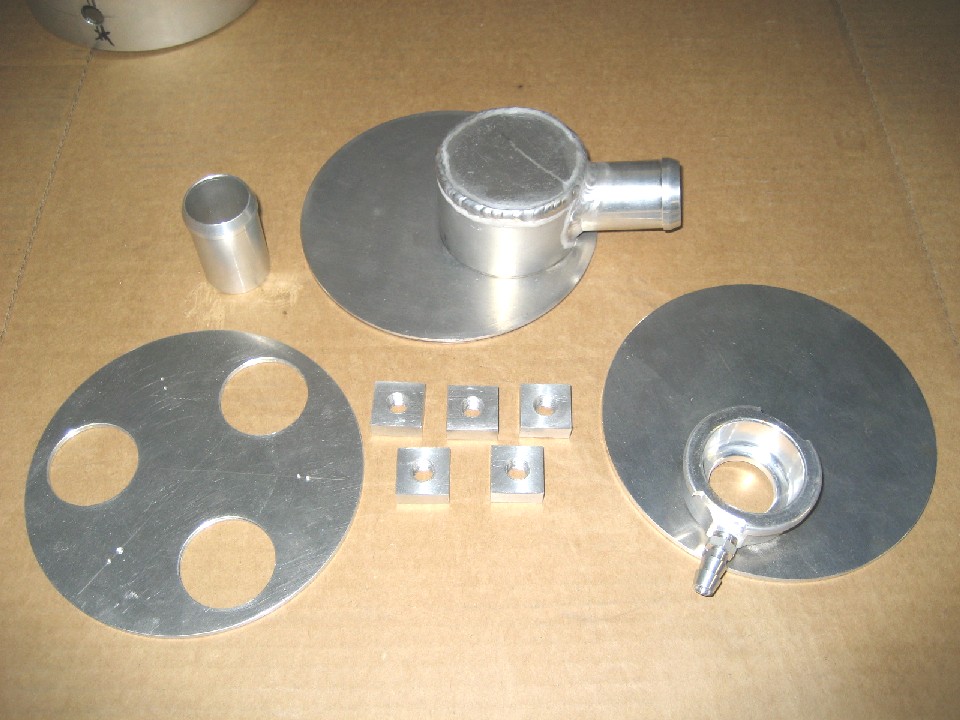 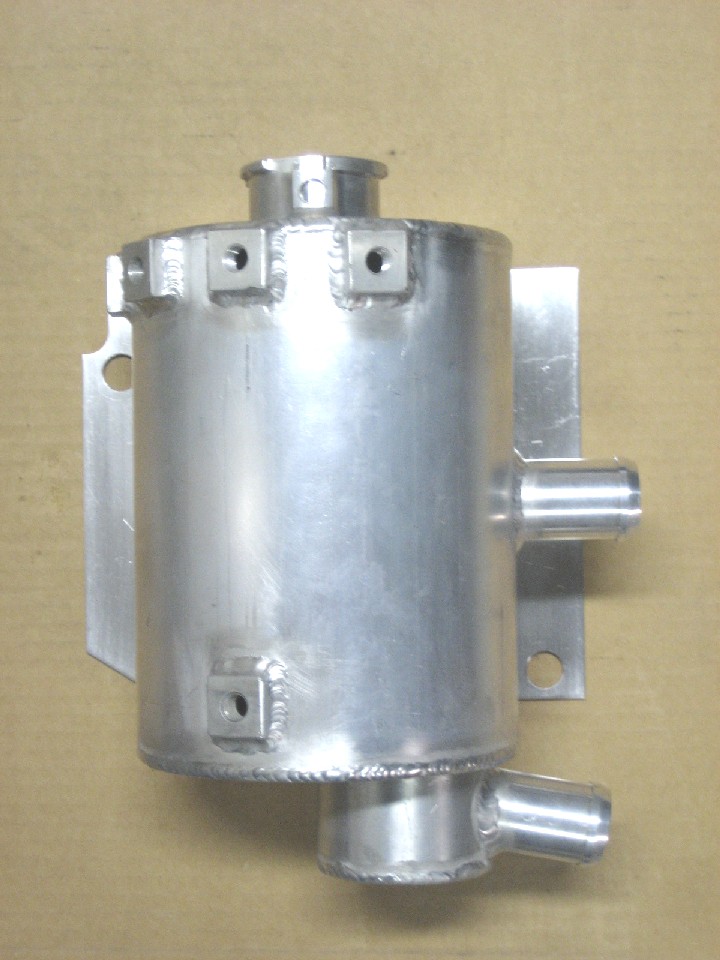
|
| andys |
 Mar 14 2013, 04:44 PM Mar 14 2013, 04:44 PM
Post
#50
|
|
Advanced Member     Group: Members Posts: 2,165 Joined: 21-May 03 From: Valencia, CA Member No.: 721 Region Association: None 
|
I found a couple of more photos (with the exit ducting removed) of how the piping routed in the front trunk and insulated.
Attached thumbnail(s) 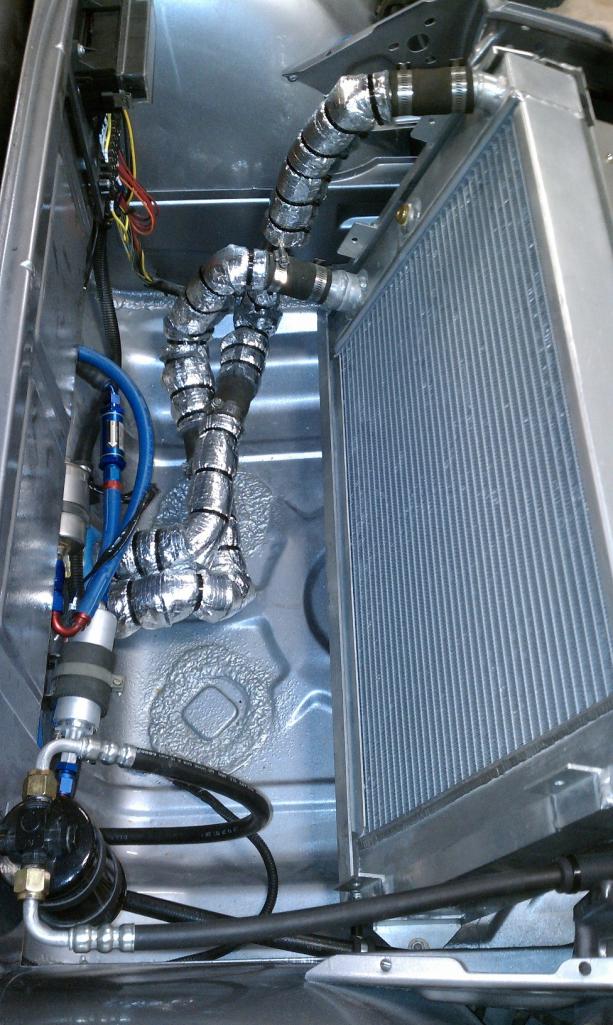 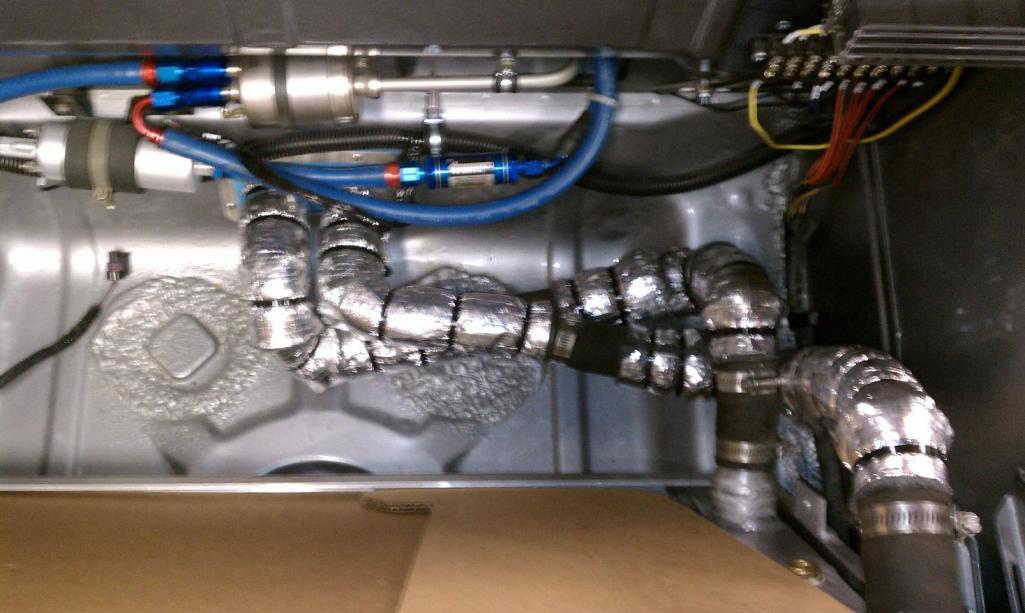
|
| tscrihfield |
 Mar 14 2013, 09:42 PM Mar 14 2013, 09:42 PM
Post
#51
|
|
Drive Fast and Take Chances    Group: Members Posts: 643 Joined: 8-September 10 From: Amelia Ohio Member No.: 12,156 Region Association: None 
|
Andy, this has shown a lot of great, quality work!
Can't wait to see he rest! Thomas |
| andys |
 Mar 16 2013, 09:37 PM Mar 16 2013, 09:37 PM
Post
#52
|
|
Advanced Member     Group: Members Posts: 2,165 Joined: 21-May 03 From: Valencia, CA Member No.: 721 Region Association: None 
|
I stubled across a couple more coolant pipe photos.
Attached thumbnail(s) 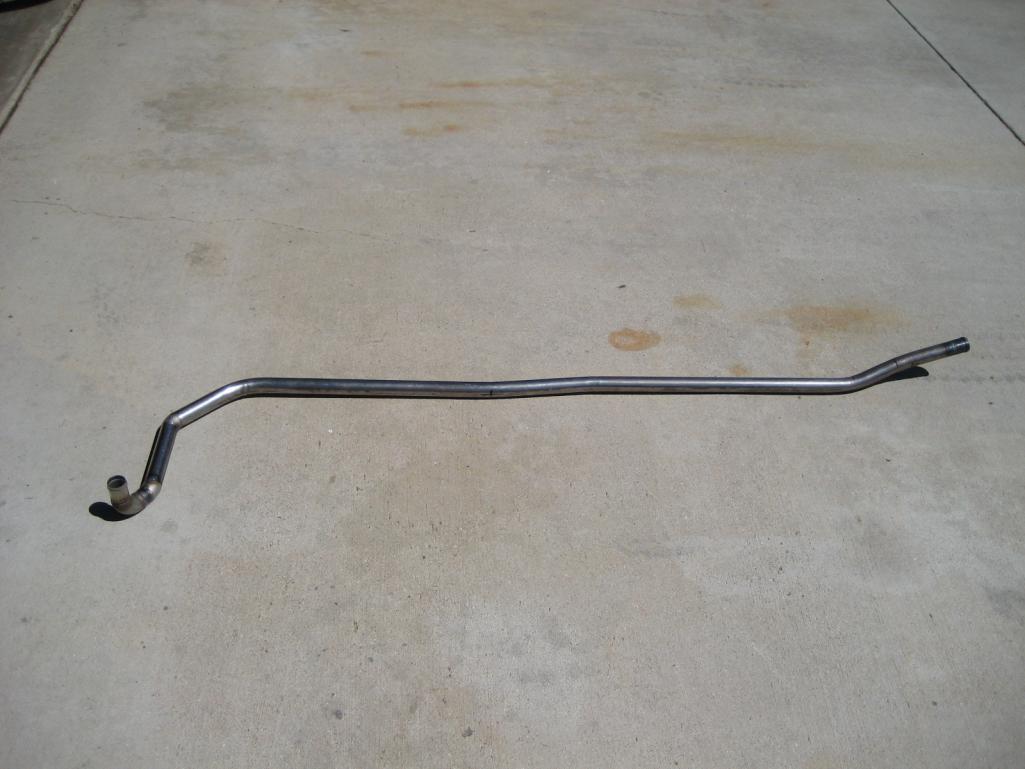 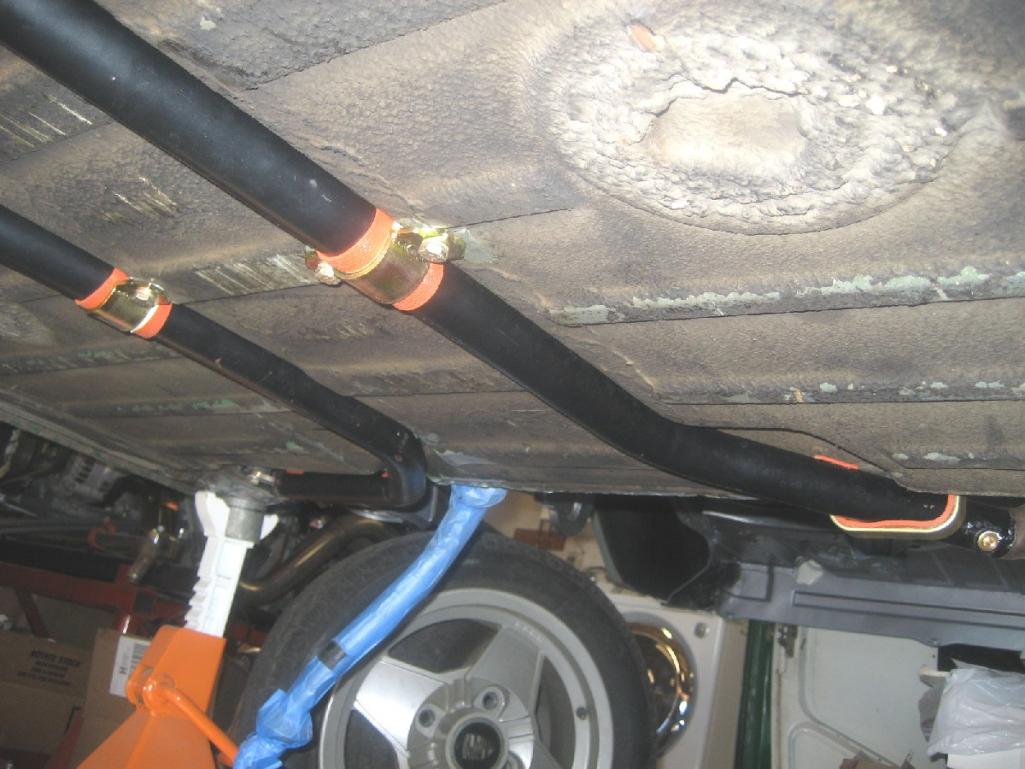 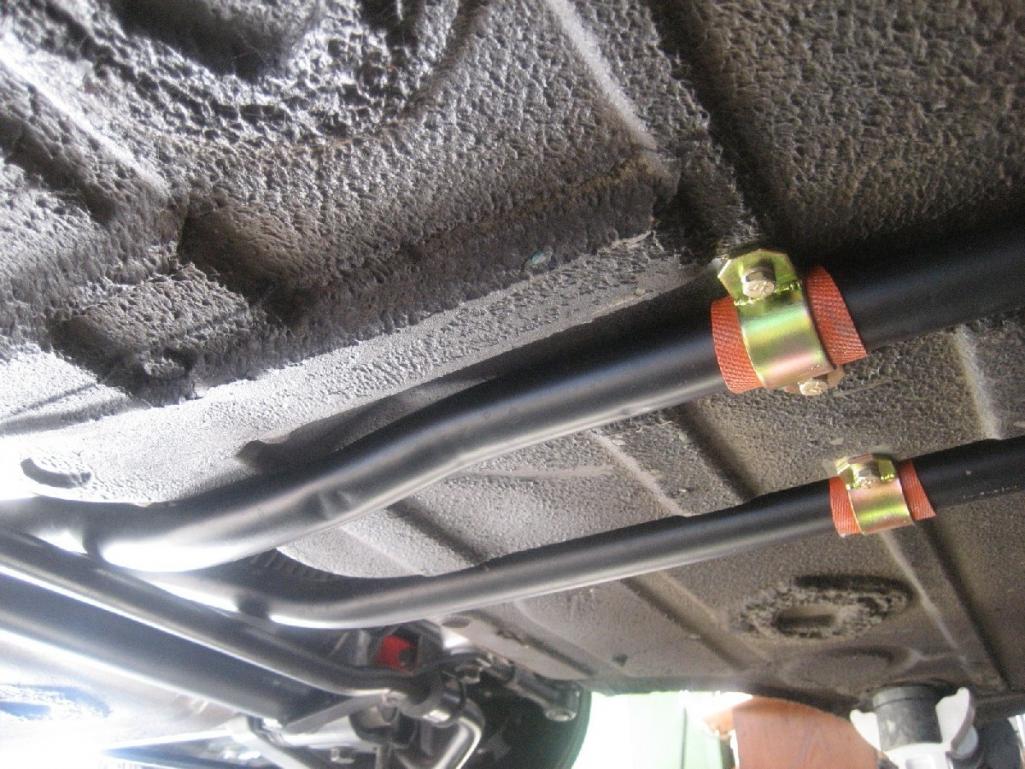
|
| andys |
 Mar 20 2013, 12:26 PM Mar 20 2013, 12:26 PM
Post
#53
|
|
Advanced Member     Group: Members Posts: 2,165 Joined: 21-May 03 From: Valencia, CA Member No.: 721 Region Association: None 
|
Here's how I did my shift linkage. I know that from time-to-time some have posted cable shifter ideas for the 901/915/Subie/etc. Here's how I did my Audi 01e 6 speed.
I did try at first to prototype a rod linkage, but the resultant angles were just not condusive to good action as the Audi shift shaft is oriented transversely and is high on the housing, so I gave that up pretty quickly. So on to a cable shifter solution, I first thought about designing a cabin shifter to suit all my needs. I quickly found that OEM shifters had nearly all the features I needed, so I went that way instead of designing and fabricating my own. I decided to go with a Toyota shifter. There are others, but I figured the Toyota would be the easiest to find. I didn't consider the Boxster shifter, as it's plastic construction doesn't lend itself well to modification. So off to the local Pick-and-Pull and I struck gold. I found MR2, '90's Celica, and '88 Tercel shifters....I also found a Mitsubishi shifter, but I figured the three Toyota shifters would be plenty enough to choose from. The MR2 shifter was nearly plug-and-play, however it didn't have quite enough gate travel for 3 gates plus the reverse gate for a 6 speed application. Just a quick note; the MR2 shifter in a nice piece for those looking to do a 5 speed shifter. The Tercel shifter was reall quite nice as well, but also suffered from a lack of gate travel. I settled on the Celica shifter mostly beacuse of the ease by which the gate limit stops could be modified. I re-configured the shifter base so that it would mount to the existing 914 shifter bolt pattern, though I did move the shift lever position back about 1 1/2" as the stock 914 position was just a bit of a stretch for me. Also, I wanted to keep the shifter low enough for a subsequent console, so I re-configured the cable bulkheads to maintain a low profile. Because there are so many gates on a 6 speed, I wanted to employ a reverse lock-out. I did this by sliding a thin wall tube over the shift lever that is actuated by a finger flange under the shift knob with a spring to keep it in the down position. At the bottom of the tube, I welded a tab that when in the down position, obstructs the shifter from entering the reverse gate. On the transaxle, I set out to design the correct lever ratios to match the travel of the shifter, and to translate the motions for the correct directions necessary. I needed a bellcrank to reverse the gate action, so I went down to my favorite aircraft surplus store, Lucky's Hardware, in Burbank, CA (a great place!) and found a circular flange mounted to a duplex bearing used for small aircraft control systems; $4 each, so I bought 2 of them. I designed and fabricated the linkages, levers, bulkheads, and zinc plated everything. To get the exact push-pull cable lengths required, I had a coil of high pressure nylon brake line left over from my old GoKart racing days, which I fed through the firewall, to the shifter, and marked. I ordered my push-pull cable from CableCraft, who I've been using for years. A phone call to their tech guy, custom length, any bulkhead, any end, any travel, a credit card, and it's in the mail within a couple of days. Great company to work with! Hope the attached photos are adequate to show what I did....ask if you have any questions. Attached thumbnail(s) 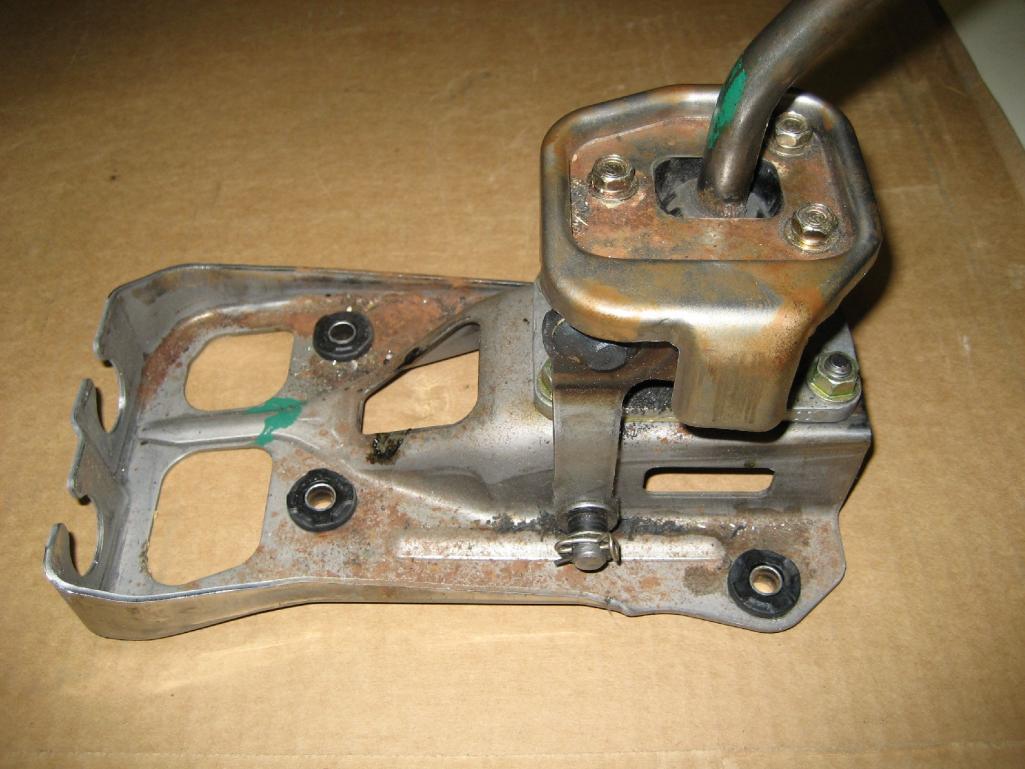 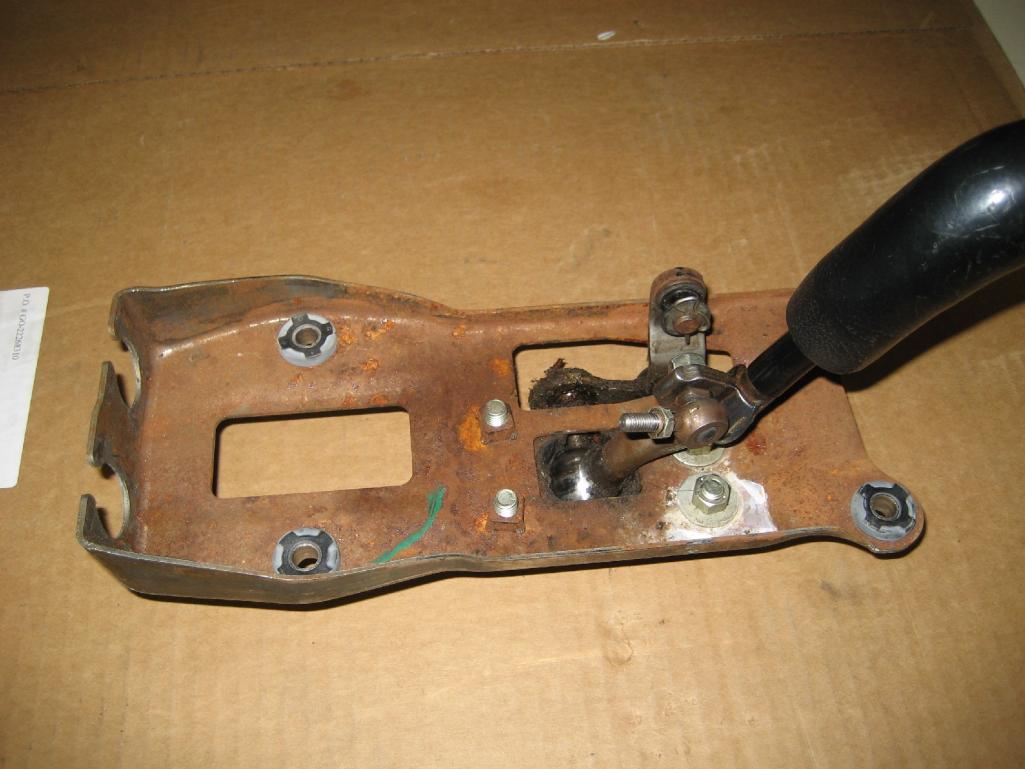 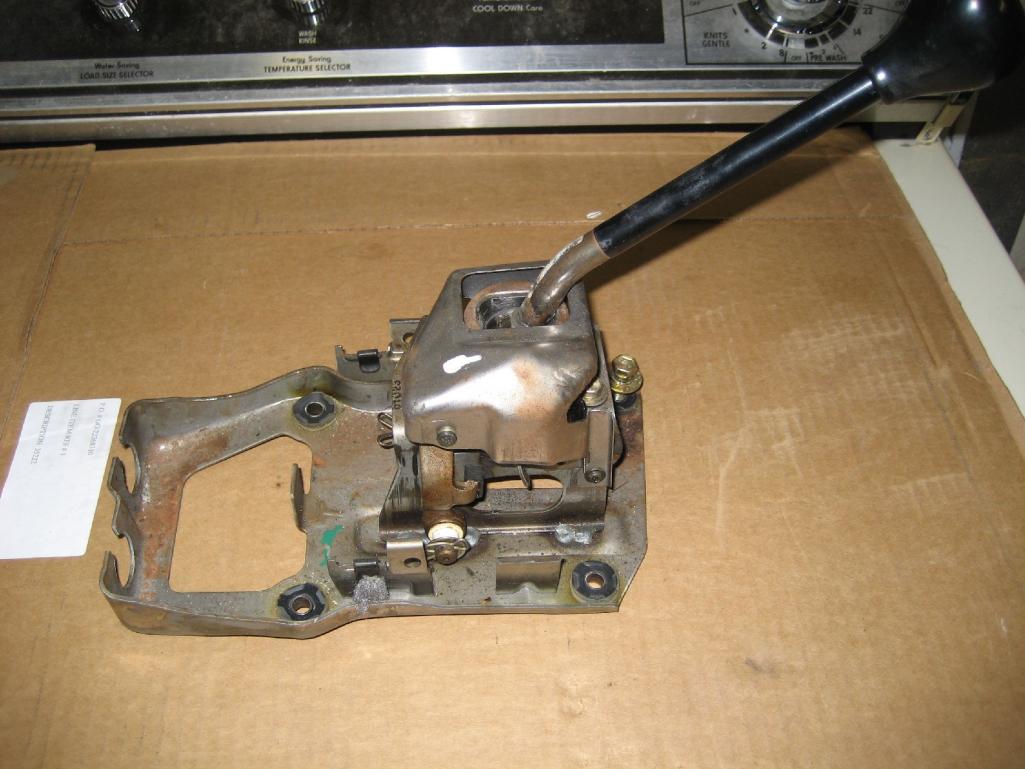 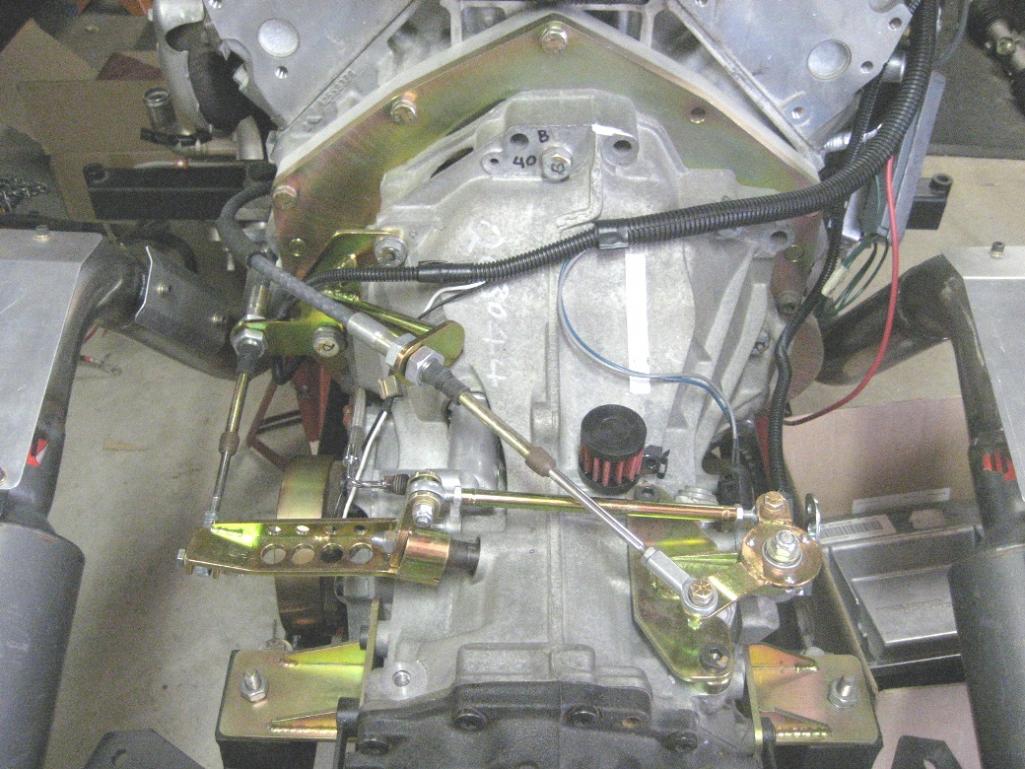 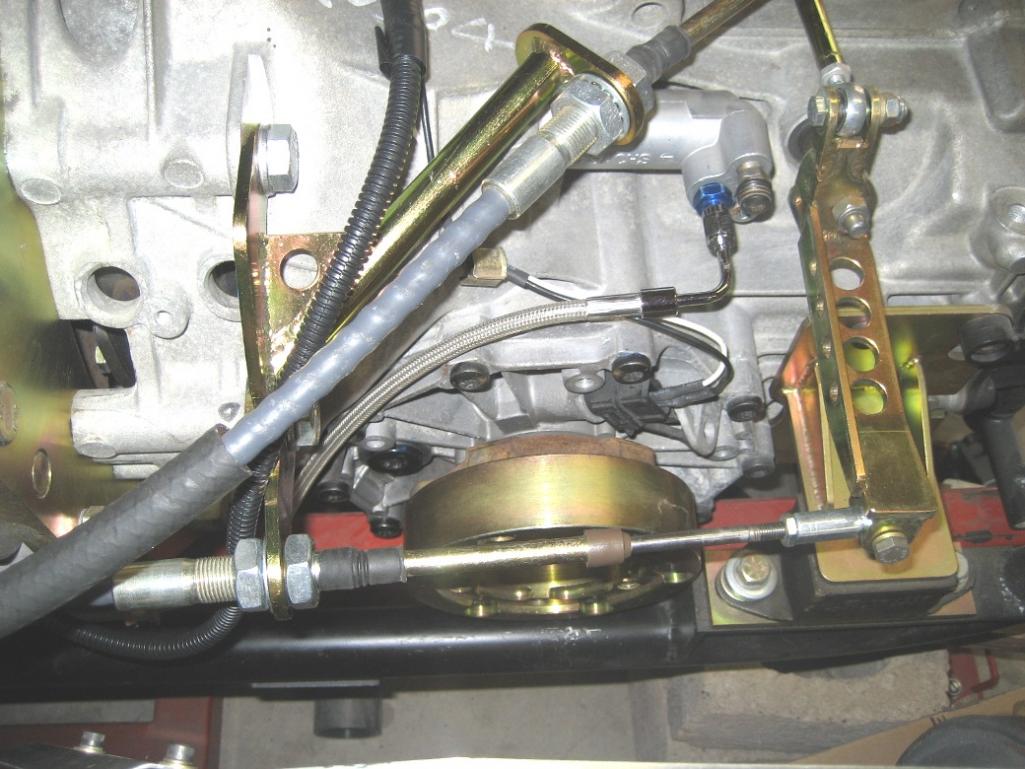 Attached image(s) 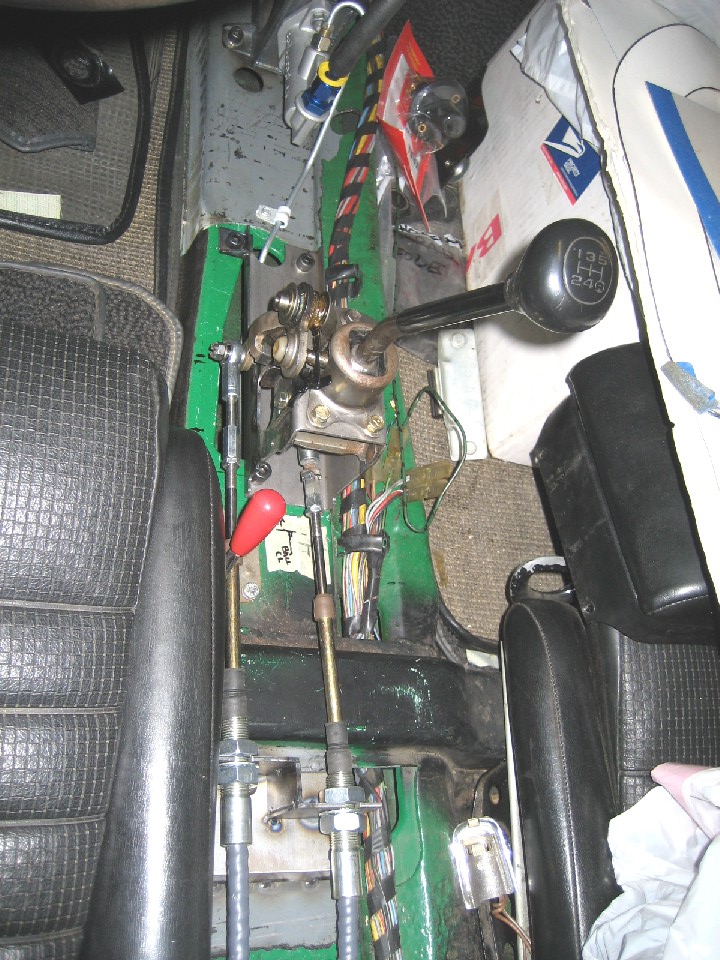 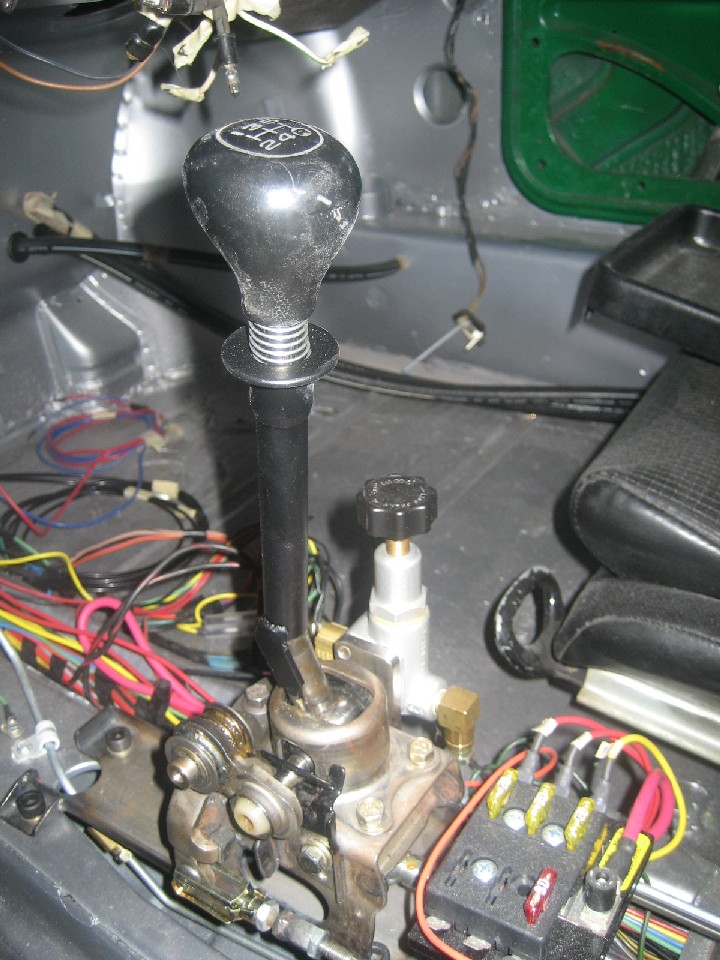
|
| andys |
 Mar 26 2013, 02:08 PM Mar 26 2013, 02:08 PM
Post
#54
|
|
Advanced Member     Group: Members Posts: 2,165 Joined: 21-May 03 From: Valencia, CA Member No.: 721 Region Association: None 
|
Time to get back to posting more retrospective build photos, so I decided to show the exhaust sytem next.
The stock LS1 headers exit in the wrong place (pointing straight at the axles), so after a little digging, I decided to go with stock LS6 Vette headers. They are thin wall cast iron, tri-Y design, and surprisingly light weight. What I like about these headers, they have some real nice heat shields, aren't prone to leakage like tubing headers, suppport 405HP (which is plenty good for the LS1), and dump on an angle somewhat centered so it's perfect for my application. The exhaust pipe routing is up-over the axles, which I made from some 2 1/2" stainless mandrel bends from Summit. The flange that bolts to the header wasn't available as an aftermarket part, so I made my own such that it will sandwich the stock Vette donut gasket. The flange is made of mild steel, so I used some 312 stainless rod that's recommended for carbon steel to stainless welds. As an aside, I found this rod is very nice to work with, and I used it on a few other dissimilar welds. For mufflers, I decided on Flowmaster three chambered stailnless. The three chambered mufflers, according to the Flowmaster noise graphs, significantly reduce the interior noise level; that is something I really wanted. Actually, I needed to determine the available space first, so I mocked-up mufflers from cardboard from the advertised dimensions and moved them around until I got them where I wanted. Since the 01E transaxle is fairly long, there was no space between it and the rear of the car to fit the Camaro style dual inlet/dual outlet muffler that some have used....I think it's a nice solution, but unfortunately not for me. Once the mufflers were welded in place, I made a brace off the transaxle to mount some rubber isolators to support the weight at the rear. I did add some heat shielding in strategic areas so as to manage the heat. First, I shielded the area adjacent to the shocks, since the muffler and inlet pipe was a bit close. I then added a heat shield where the pipe runs close to the shifter cables. Finally, I installed heat shields to the top of the mufflers to keep the trunk floor from getting too hot; these are made by Flowmaster specifically for the three chambered muffler. After driving the car, it is a bit loud (exterior noise), but I'm not surprised due to how short the exhaust system is. I know I can quiet it down by adding a cross-over pipe, but there's so little room I'm not sure yet how to route the pipe; I'll have to chew on this for a while. There's also a drone under load from about 1800 - 2000 RPM. After some research, I found that a Helmholz chamber can cancel out this drone. A closed end pipe, regardless of routing, placed preferably just ahead of the muffler, calculated to the proper length (wave speed, number of pulses, frequency, etc) can cancel out the resonance (drone). It's a tidy solution that I may employ once I figure out the cross-over pipe. Attached thumbnail(s) 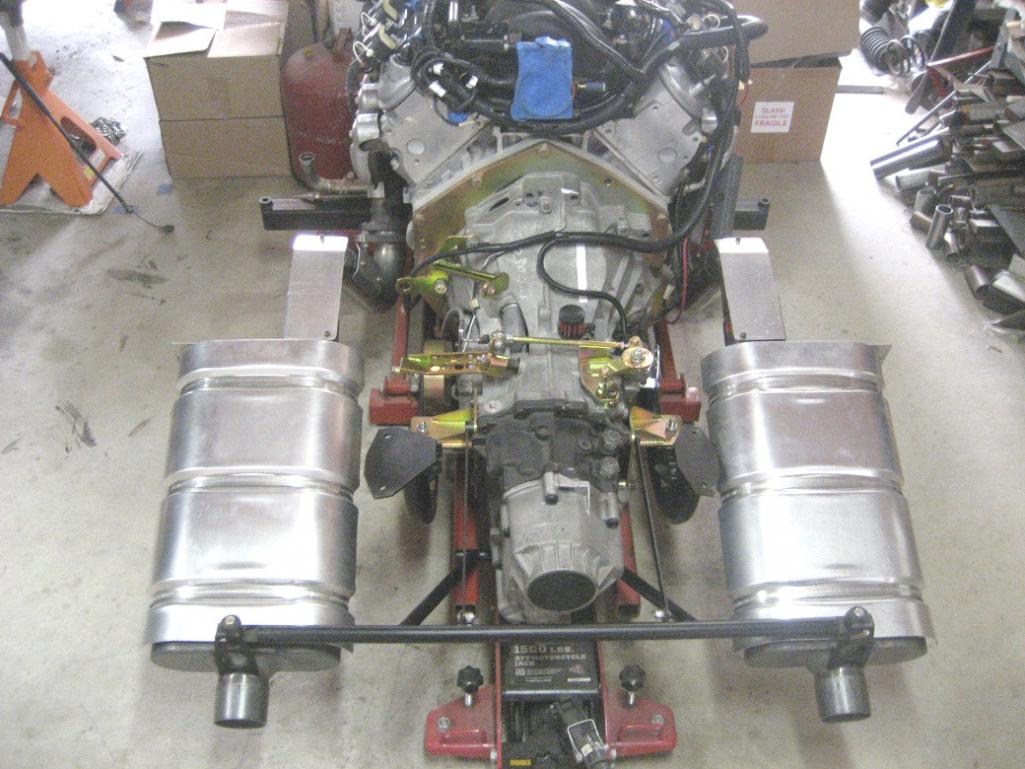 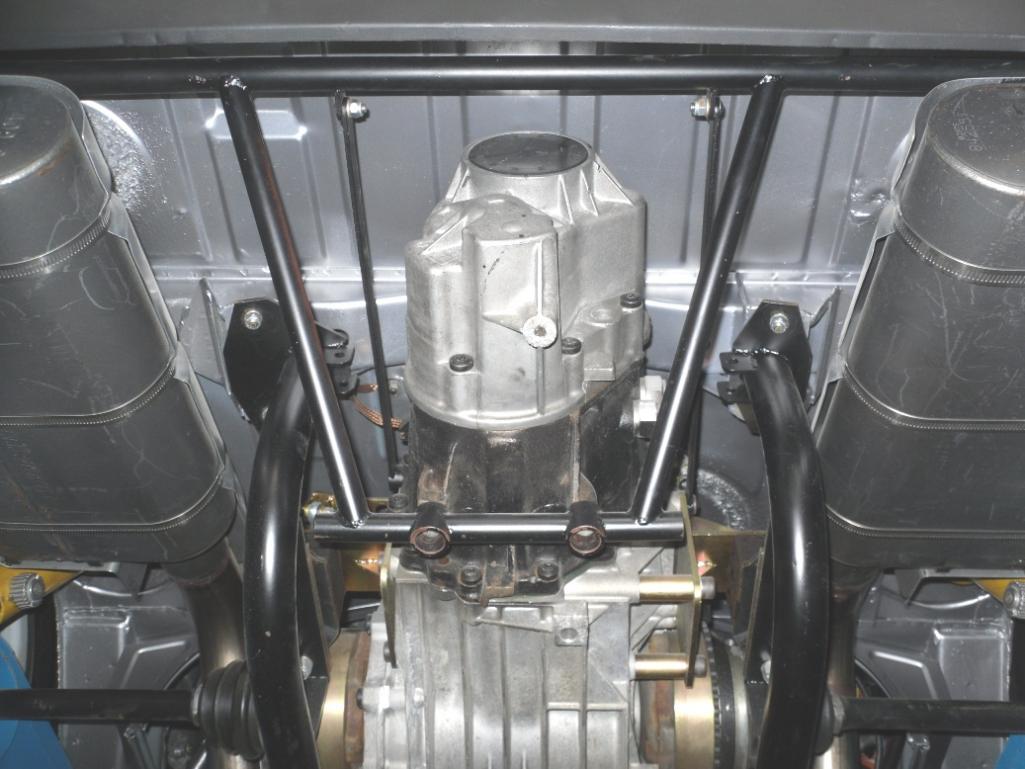 Attached image(s) 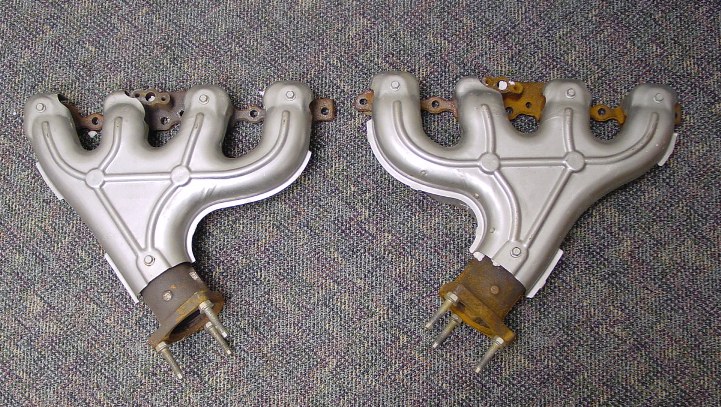 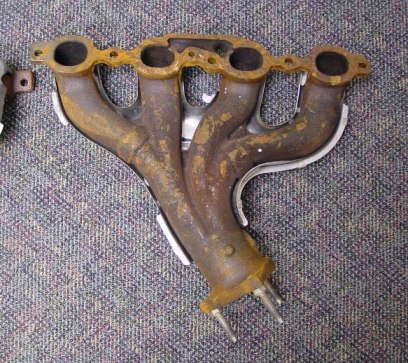 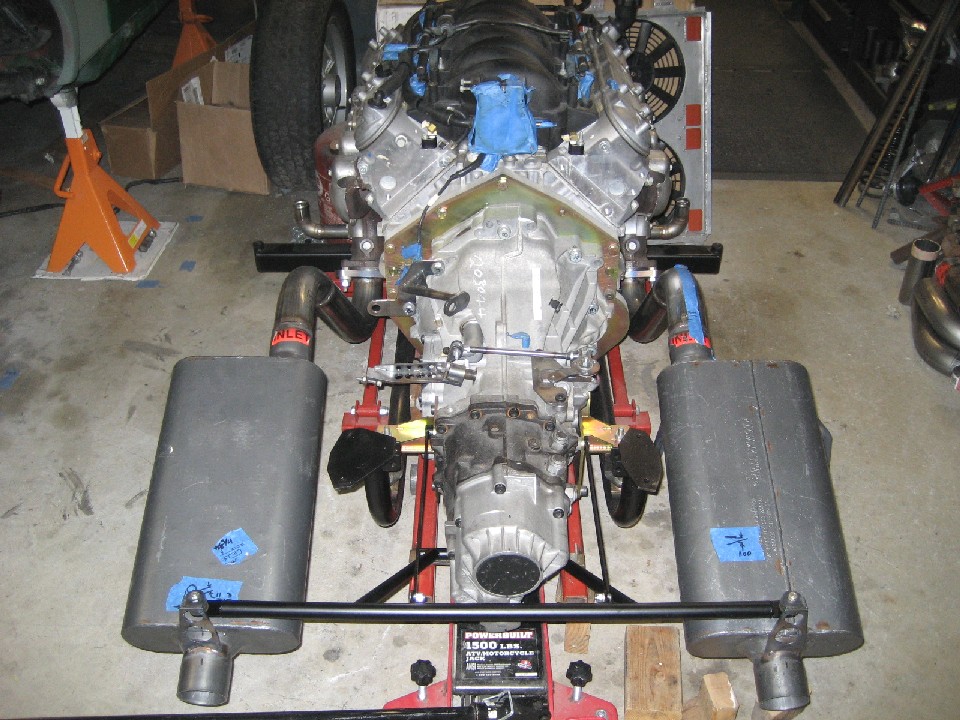 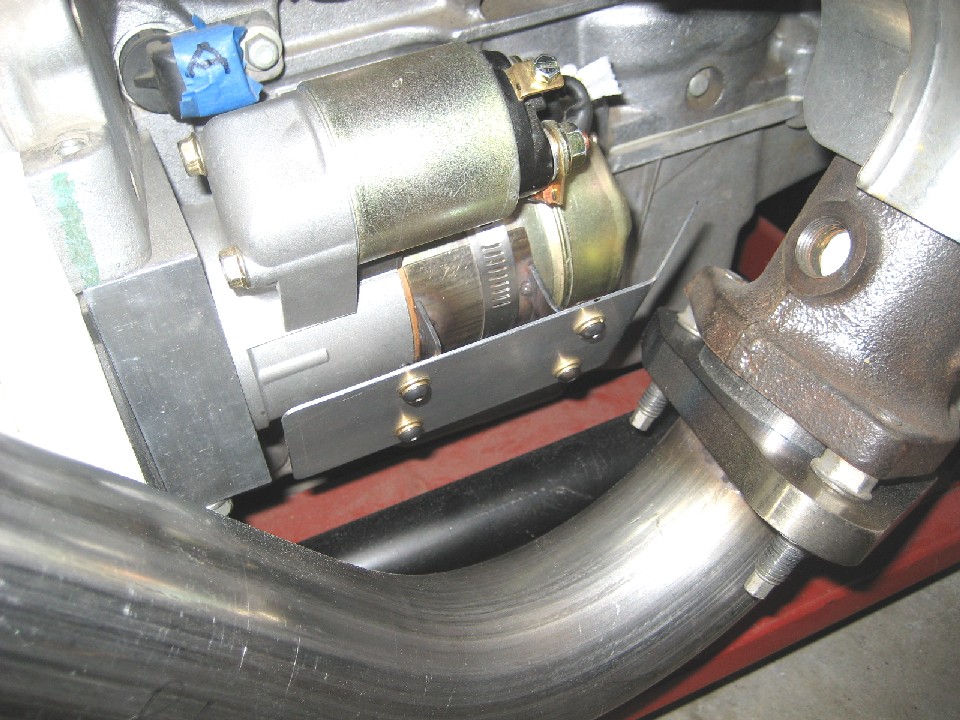 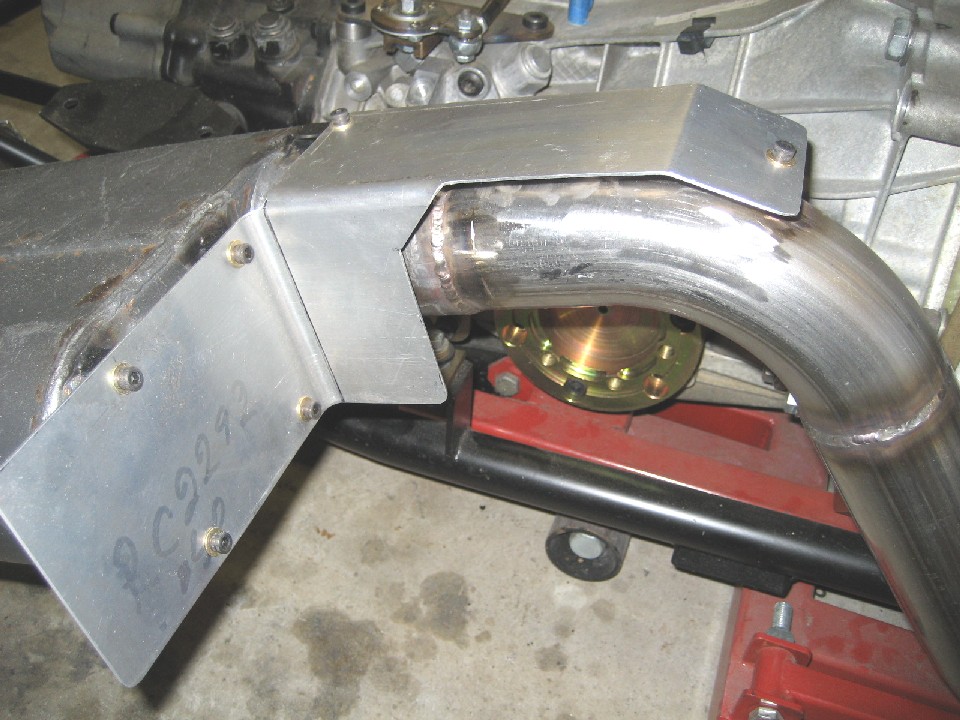
|
| andys |
 Mar 28 2013, 03:28 PM Mar 28 2013, 03:28 PM
Post
#55
|
|
Advanced Member     Group: Members Posts: 2,165 Joined: 21-May 03 From: Valencia, CA Member No.: 721 Region Association: None 
|
Thought I'd go through the fuel system next. The LS1 EFI system requires 58 psi. The PCM runs the fuel pump for 3 seconds when the key is on. The fuel pump resumes running once the PCM senses the crank rotating. So the basic fuel system has an external electric fuel pump which feeds a bypass style fuel pressure regulator with one line running to the motor, and the other returning to the fuel tank.
In order to adapt -6AN fittings to the stock 914 fuel tank, I tapped the exisiting inlet and outlet bungs to 3/8NPT....I got this tip from 914WORLD; Thanks! I installed some -6AN X 3/8NPT fittings. What I did on the outlet fitting, was to silver braze a tube and screen (sock) to mimic the 914 in tank screen (actually a VW part) to strain out any big particles. I used Summit Twist Tite push on hose and fittings that's good for 250psi. The feed hose goes through an Earl's 100 micron course filter before entering the Walbro 255 electric fuel pump. One of the two sure death's of this type of pump is particulate contamination, so an additional $50 for the pre-filter is worth it. The high pressure side of the pump feeds into a Vette filter/regulator to bring the pressure down to 58psi. It has a bypass which is plumbed back to the the orignal 914 return line bung. The regulated pressure feed hose goes to a thru-tunnel steel tube, but more on that in a minute. The Vette filter/regulator uses GM type push-on connections; one 3/8' male inlet, one 5/16" male return, and one 3/8" female out. To couple the two male fittings to -6AN, Russell makes adapter fittings, but here's a work of caution: The early style uses a plastic retaining clip that reportedly fails on occasion, according to experiences on the LS1 boards where some fires resulted. Russell subsequently offered a re-designed adapter that employs a positive locking system (644120, 3/8" x -6AN, and 644110, 5/16" x -6AN). The adapters shown in my photo, are the early stlye which I replaced as soon as I read the failure accounts. For the regulated side with the 3/8" female connector, I bought from NAPA a steel adapter tube that had the appropriate swaged male ends, cut one end off, and installed a 45 degree flare nut and flared the othe end. I then made a 180 degree bend to better route the hose under the tank and to the through tunnel steel tube. I purposely made the hoses long enough to allow me to pull the fuel tank up high enough to service anything underneath it without having to romove the hose fittings. Now to the steel through tunnel line. Since I knew I wanted a steel line with fittings capable of sealing 58psi fuel pressure safely, I decided on a 60" pre-made 3/8" steel brake line with 45 degree flared ends. Here's why I went this route: NAPA offers brass 45 degree flare 3/8" x -6AN push-on high pressure hose adapters in both male and female. This kept things really simple without the need for all kinds of fittings cobbled together. The brake line was bent to shape by trial and error untill it had the shape I was looking for. It passes through the stock 914 rubber fuel line grommet at the front. I did have to slit the grommet to get the line in it, then I plugged the return line hole and pushed the grommet into place. The brake line at the engine bay makes a 90 degree bend towards the passenger side. Here, I added a flare line coupling and used a second pre-made brake line formed to run a path up, then turn towards the passenger side under the engine shelf, all hung from Adel clamps. This line stops just above the engine shelf where another NAPA flare to -6AN hose fitting is used. With another Summit hose, it runs to the LS1 fuel rail through a heat reflective tube. The fitting on the fuel rail in also a GM push-on, so another Russell adapter fitting was used there. That was long winded for sure, but hope it helps detail what the photos don't show. Attached thumbnail(s) 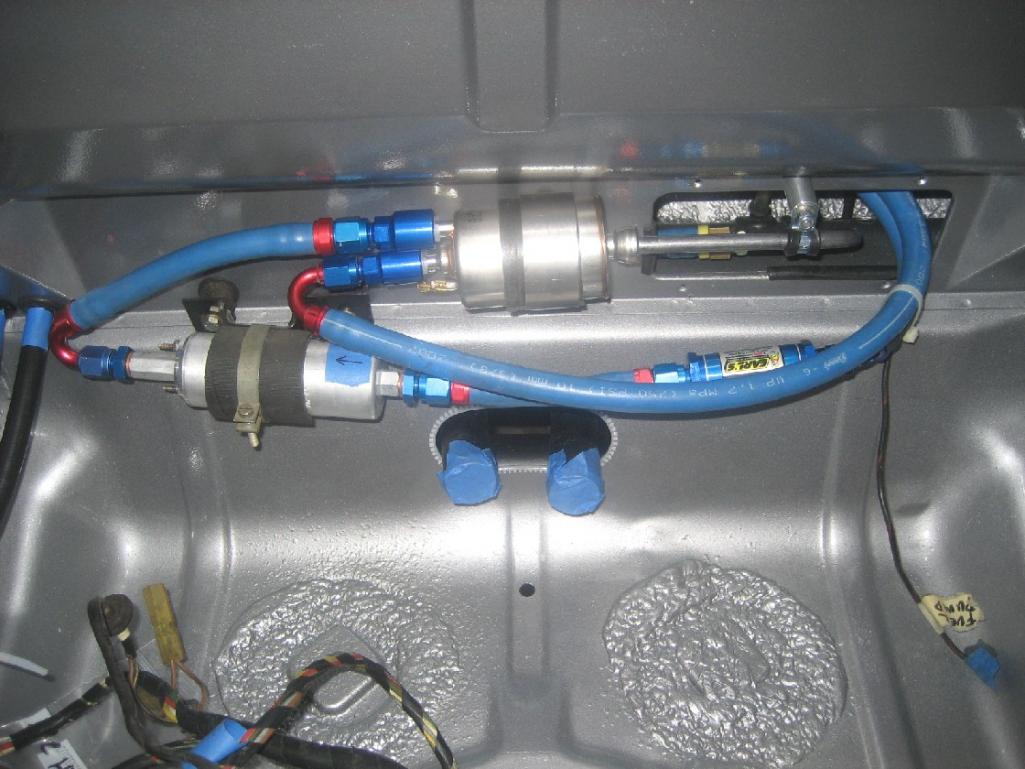 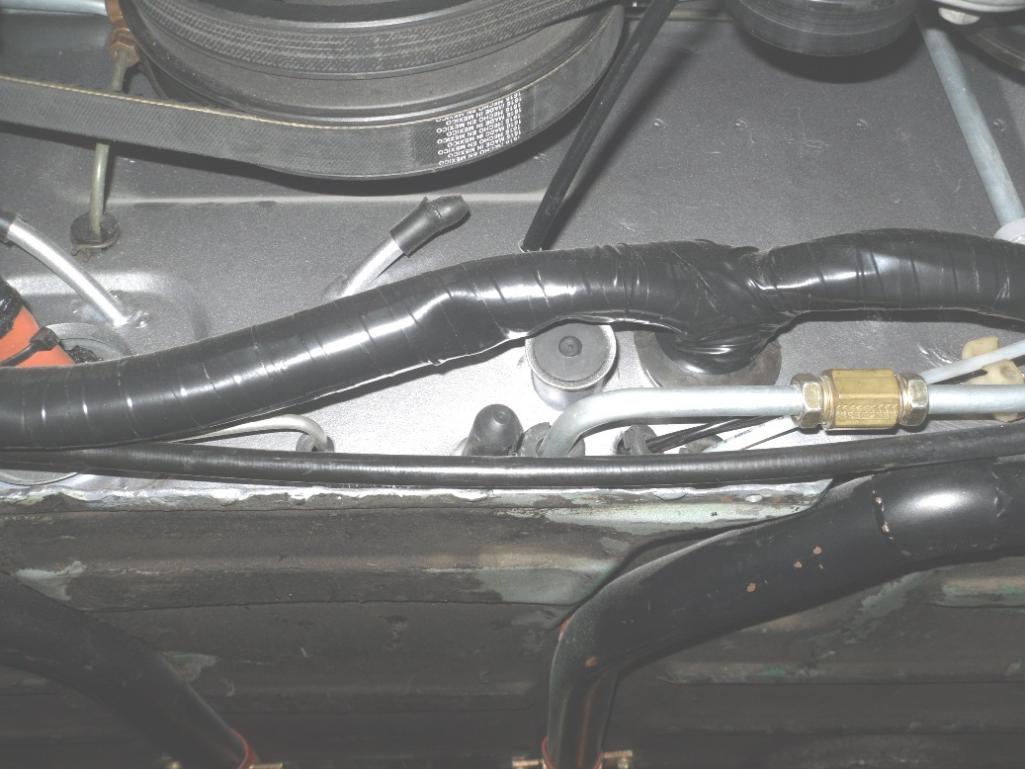 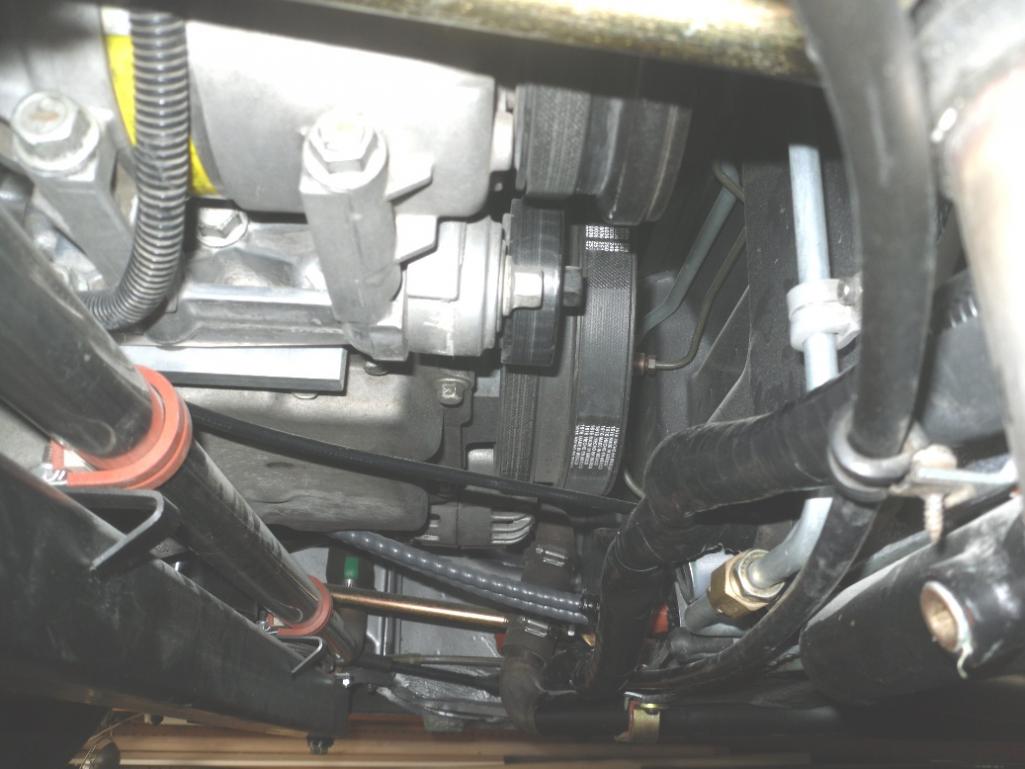 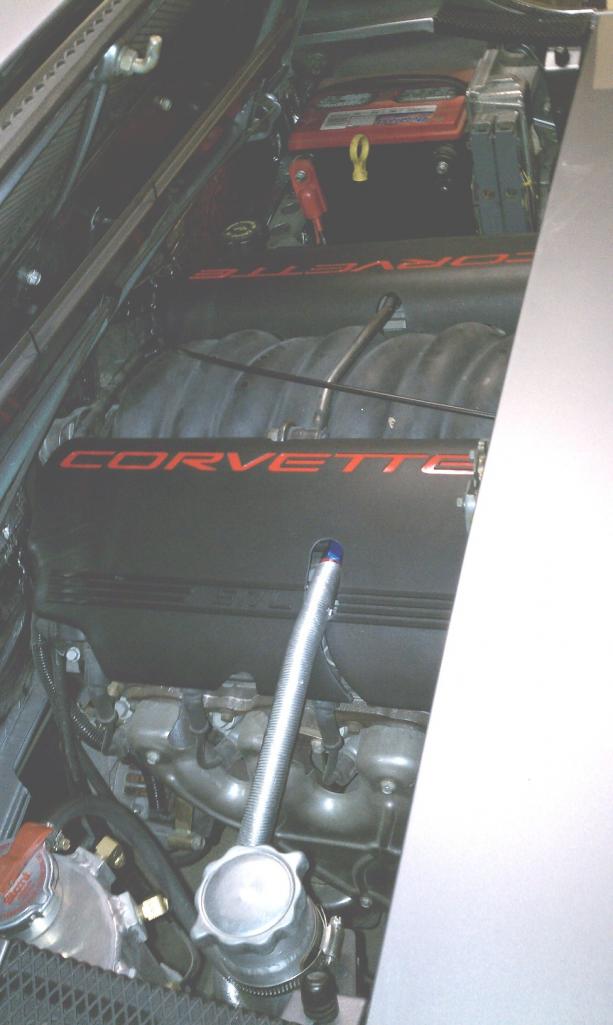 Attached image(s) 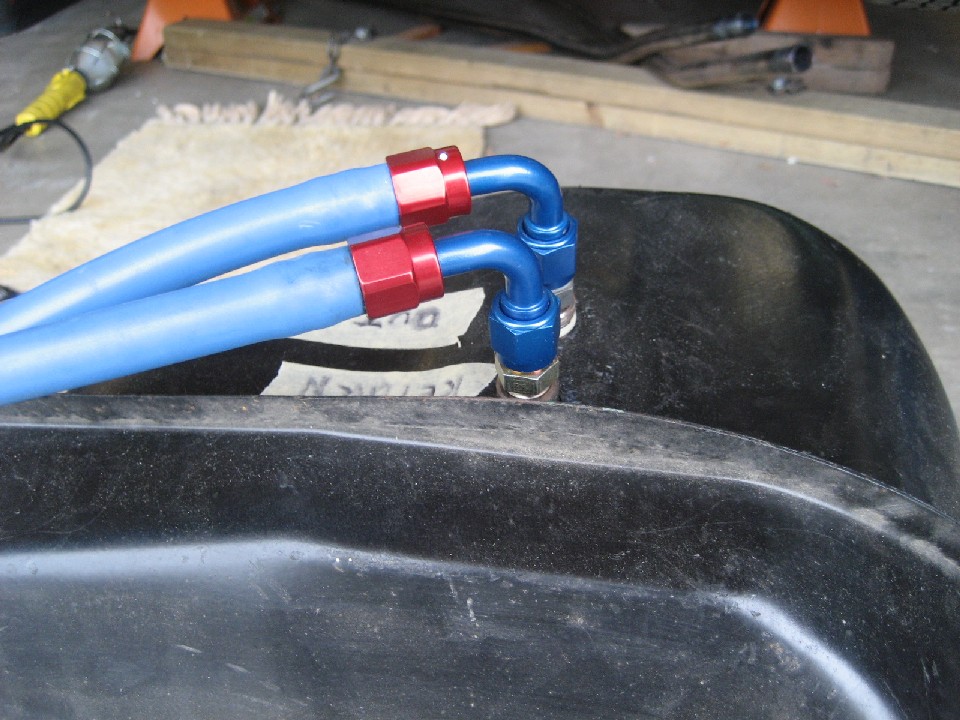 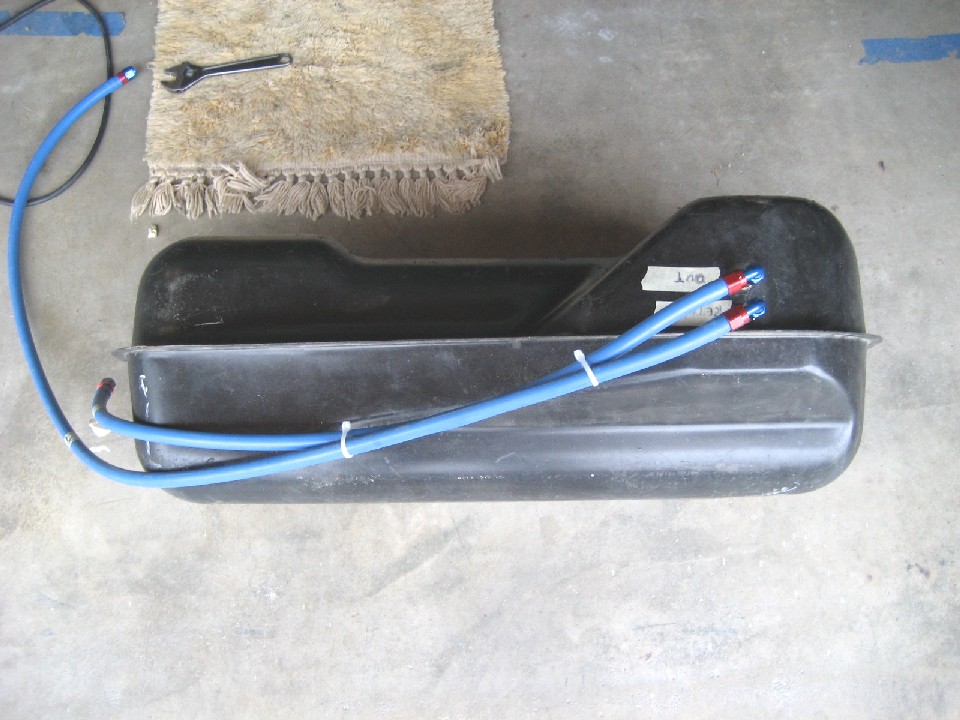 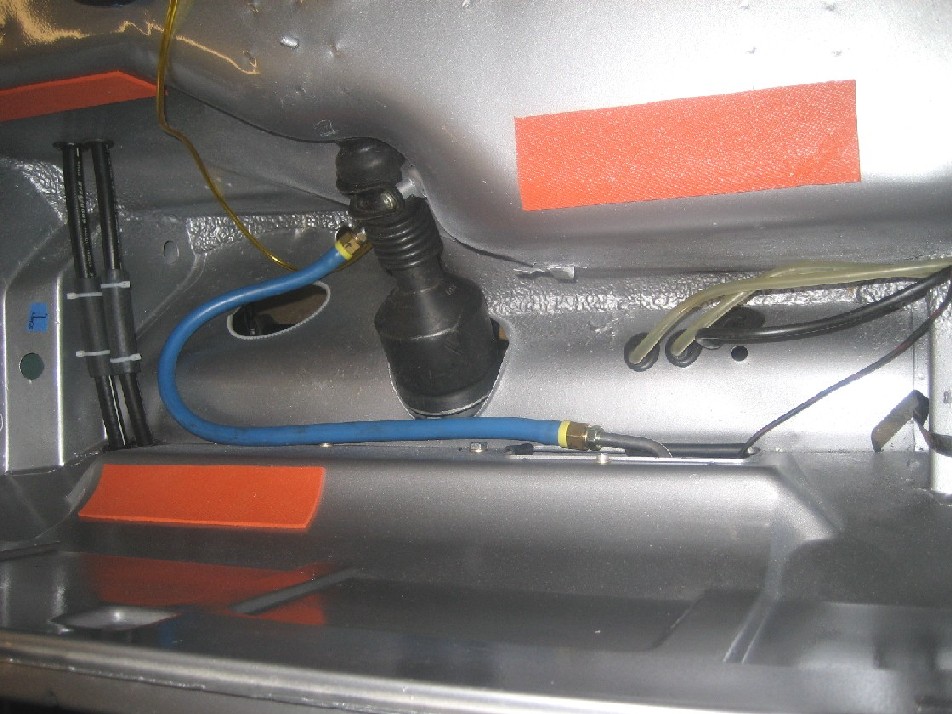
|
| dflesburg |
 Mar 29 2013, 09:08 AM Mar 29 2013, 09:08 AM
Post
#56
|
|
Senior Member    Group: Members Posts: 1,722 Joined: 6-April 04 From: Warm and Cheerful Centerville Ohio Member No.: 1,896 Region Association: None |
Wow, amazing work, the only comment I have is why fiberglass flares when you could get steel in Atlanta for cheaper than I got mine back in 1991 from Stoddard...
|
| andys |
 Mar 29 2013, 09:17 AM Mar 29 2013, 09:17 AM
Post
#57
|
|
Advanced Member     Group: Members Posts: 2,165 Joined: 21-May 03 From: Valencia, CA Member No.: 721 Region Association: None 
|
The AA steel flares were not yet available at the time I needed them.
Andys |
| DBCooper |
 Mar 29 2013, 09:30 AM Mar 29 2013, 09:30 AM
Post
#58
|
|
14's in the 13's with ATTITUDE     Group: Members Posts: 3,079 Joined: 25-August 04 From: Dazed and Confused Member No.: 2,618 Region Association: Northern California |
Looks excellent, and like a whole lot of fun. I personally would take off those Corvette plastic covers though. I like the way that engine looks without them and it provokes far more mystery and trepidation among people, even car guys, who peek in there. I LOVE it when car guys can't explain to their wives what they're looking at.
|
| andys |
 Mar 29 2013, 10:10 AM Mar 29 2013, 10:10 AM
Post
#59
|
|
Advanced Member     Group: Members Posts: 2,165 Joined: 21-May 03 From: Valencia, CA Member No.: 721 Region Association: None 
|
Looks excellent, and like a whole lot of fun. I personally would take off those Corvette plastic covers though. I like the way that engine looks without them and it provokes far more mystery and trepidation among people, even car guys, who peek in there. I LOVE it when car guys can't explain to their wives what they're looking at. Yeah, I'm not a fan of the CORVETTE lettering; too streetrodish for me. I actually do like that they cover the mess of coils and wires, and cleans-up the engine a lot. My original plan was to sand/fill/prime/paint the Vette coil covers same color as the body. I've seen some done this way, and it looks really sharp....but it's a lot of work to do it right, so I just stuck them on as-is for the time being. I'm not worried about explaining anything to my wife, cause she doesn't care. Andys |
| Rand |
 Mar 29 2013, 10:42 AM Mar 29 2013, 10:42 AM
Post
#60
|
|
Cross Member      Group: Members Posts: 7,413 Joined: 8-February 05 From: OR Member No.: 3,573 Region Association: None |
But if you have that thing out somewhere and some hotrod guy's wife asks him what engine it is and he fumbles a story, *that's* funny. (IMG:style_emoticons/default/wink.gif)
Amazing build. Thanks for sharing here. (IMG:style_emoticons/default/beerchug.gif) |
  |
1 User(s) are reading this topic (1 Guests and 0 Anonymous Users)
0 Members:

|
Lo-Fi Version | Time is now: 14th December 2025 - 11:57 AM |
Invision Power Board
v9.1.4 © 2025 IPS, Inc.








